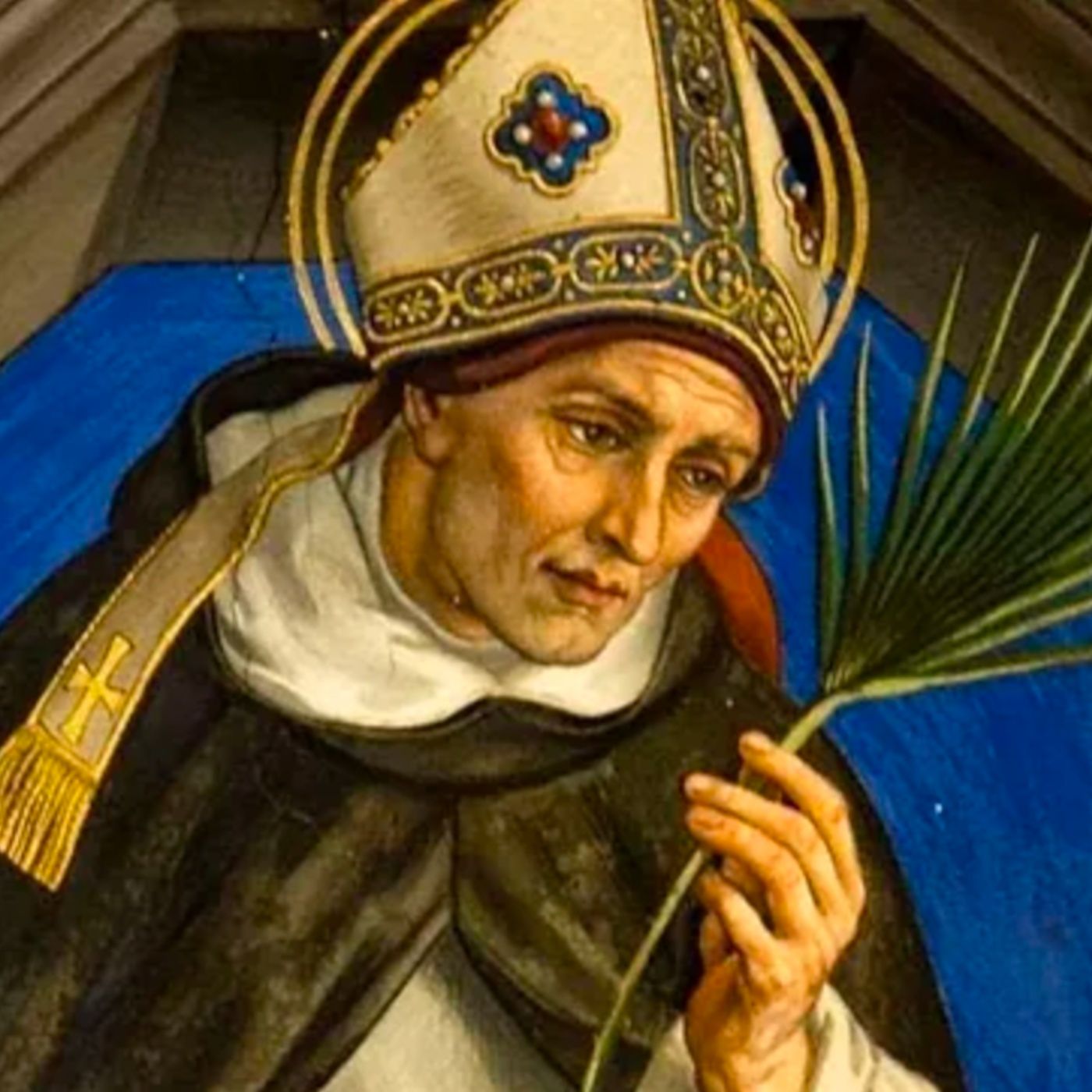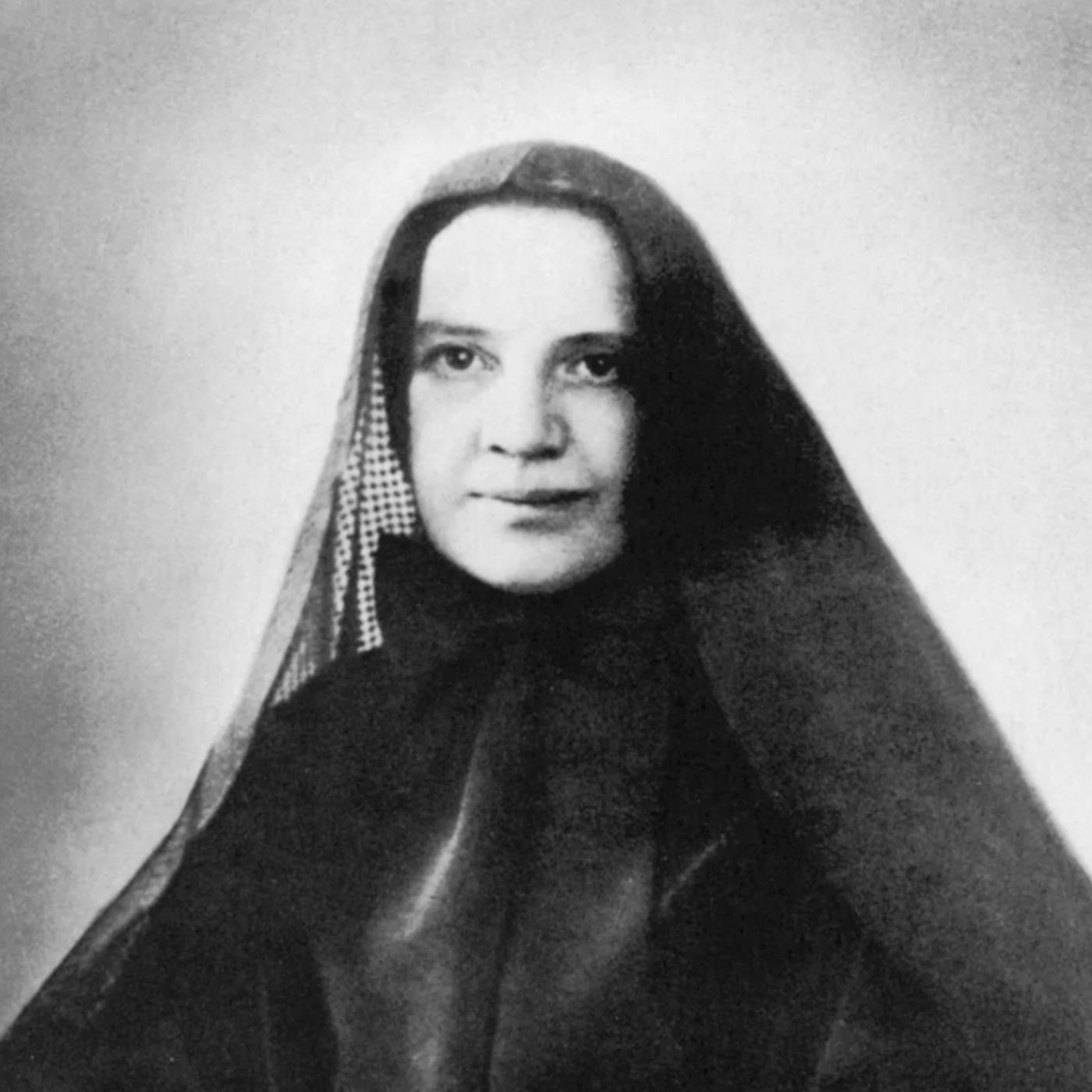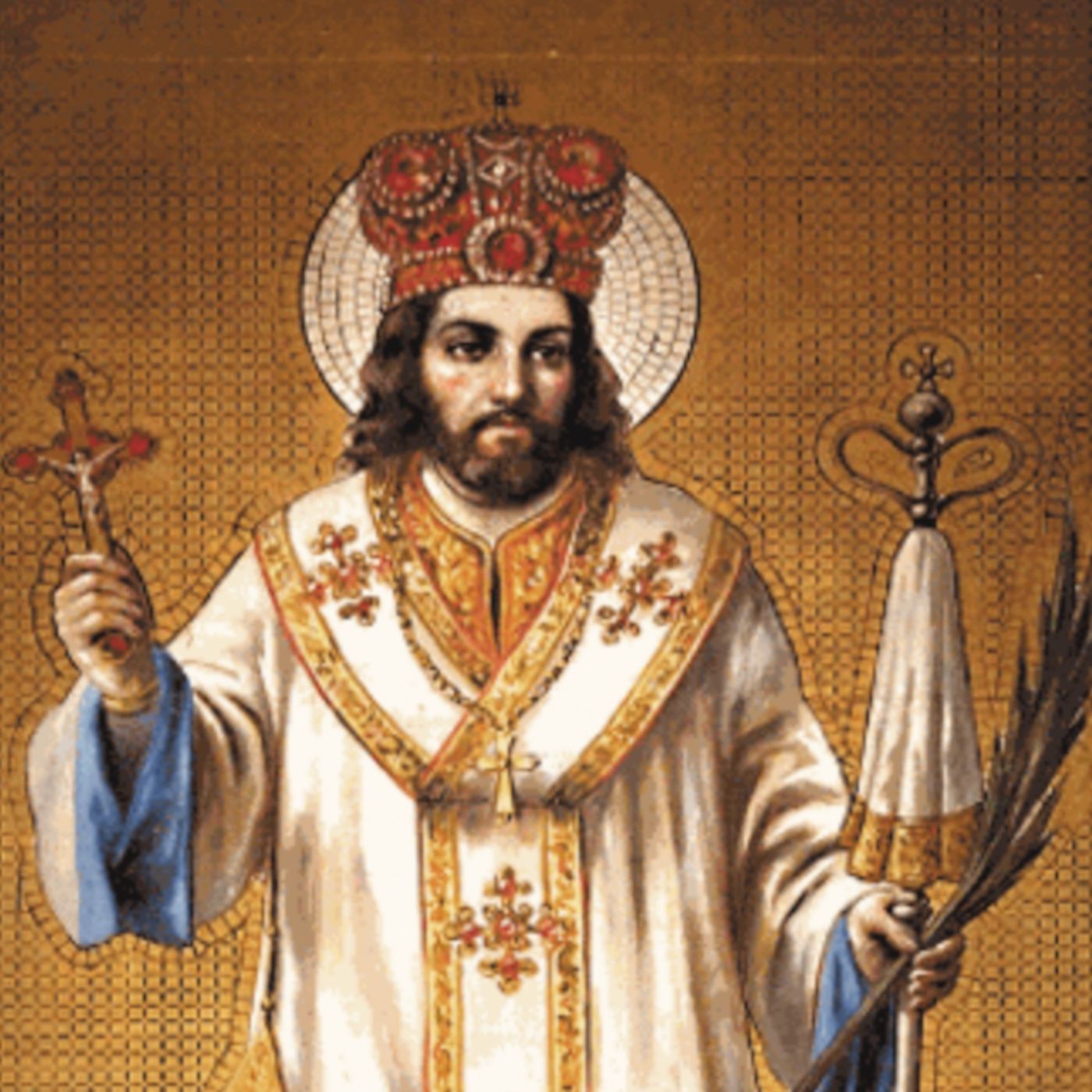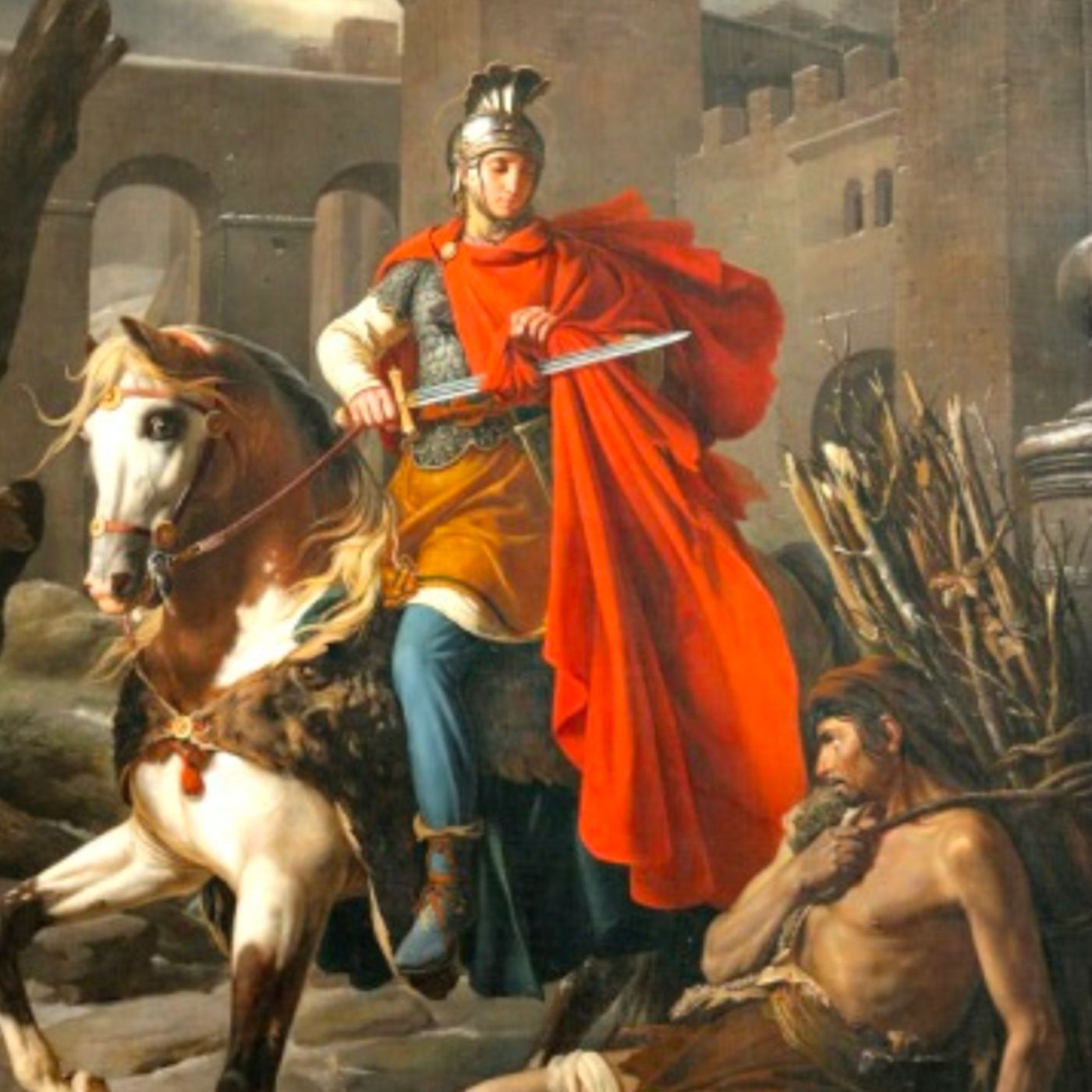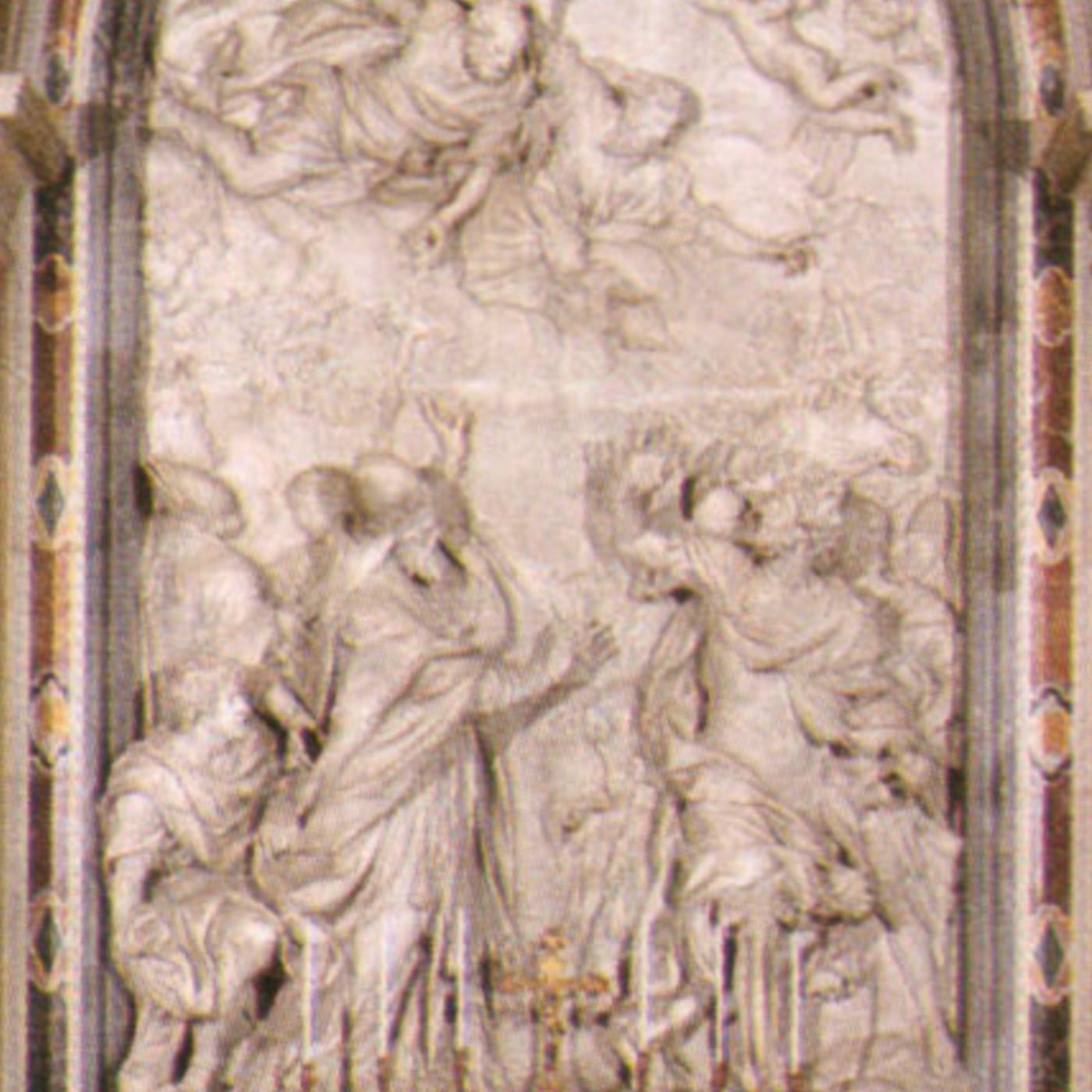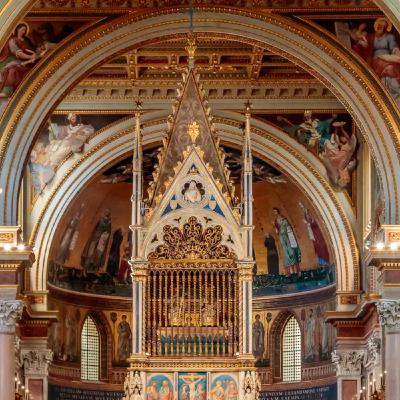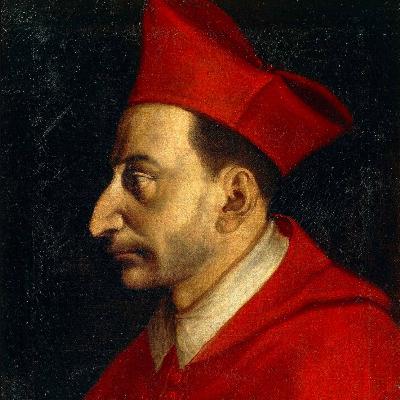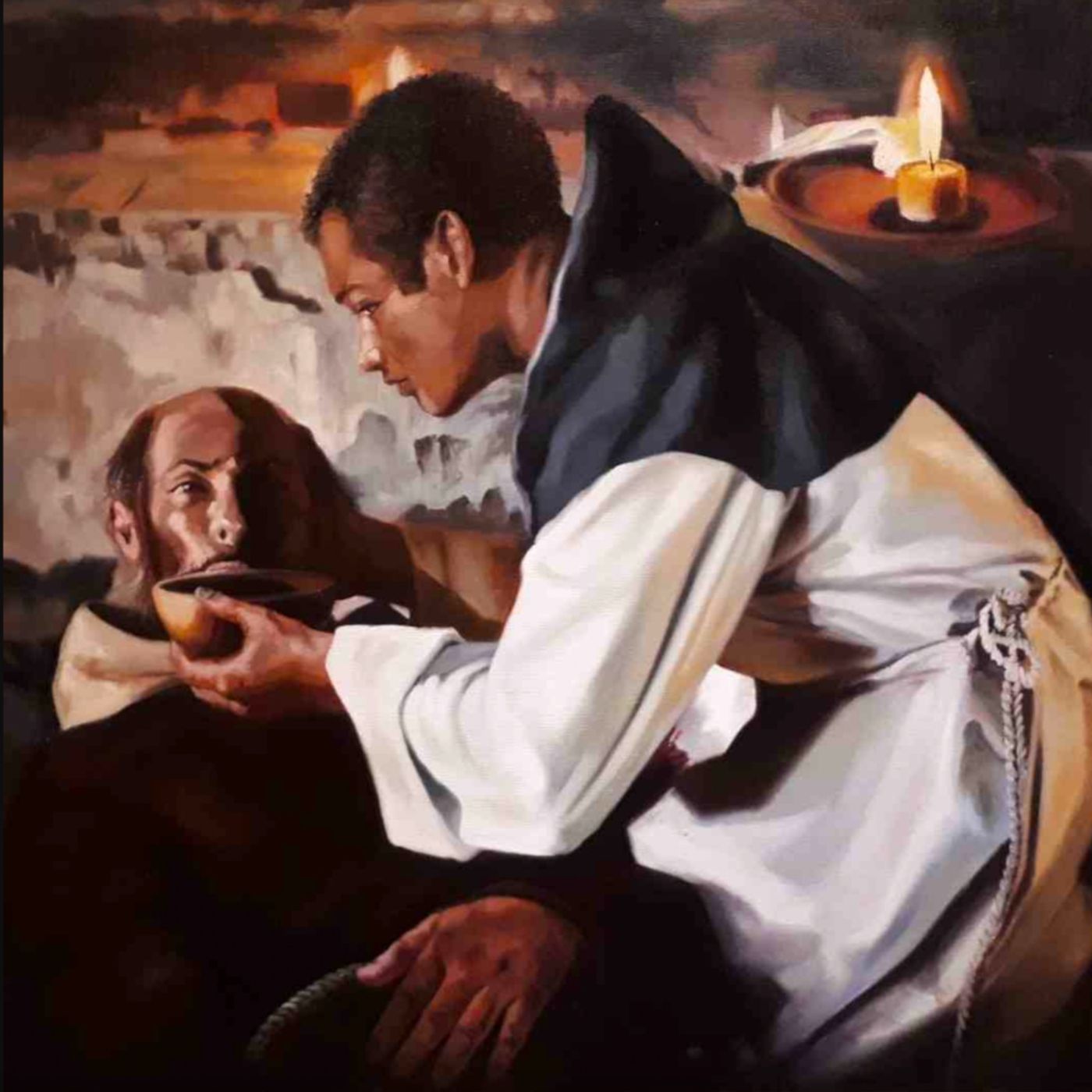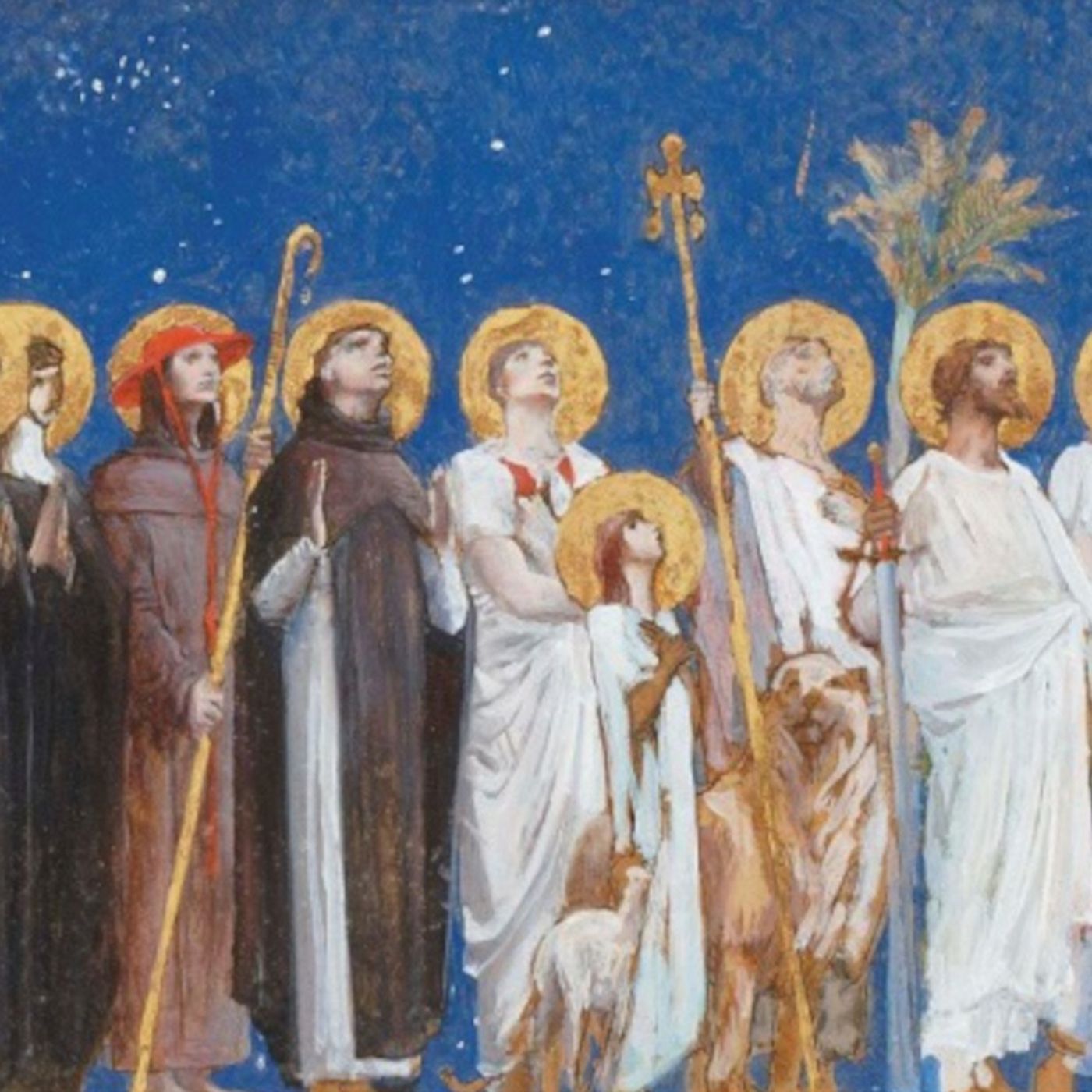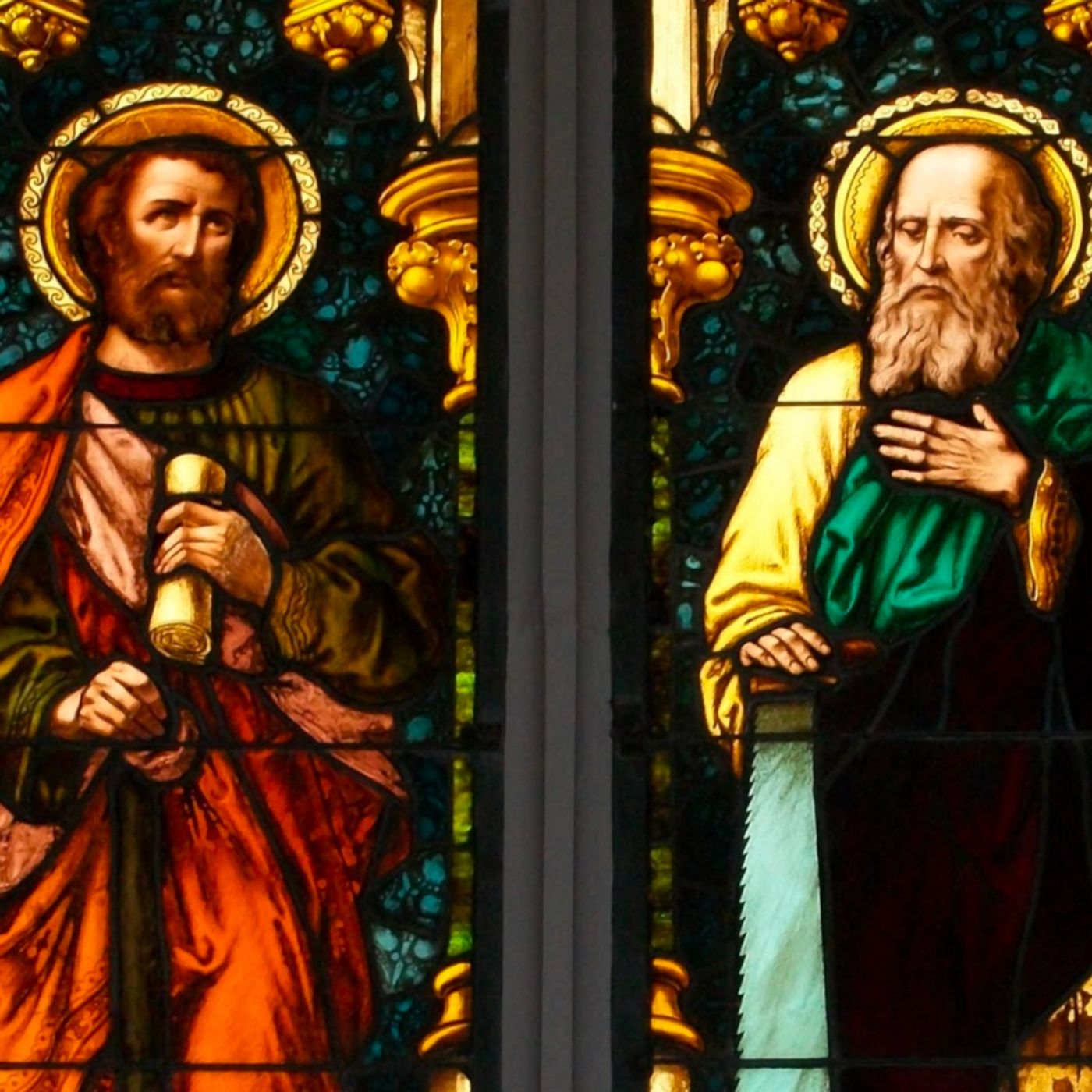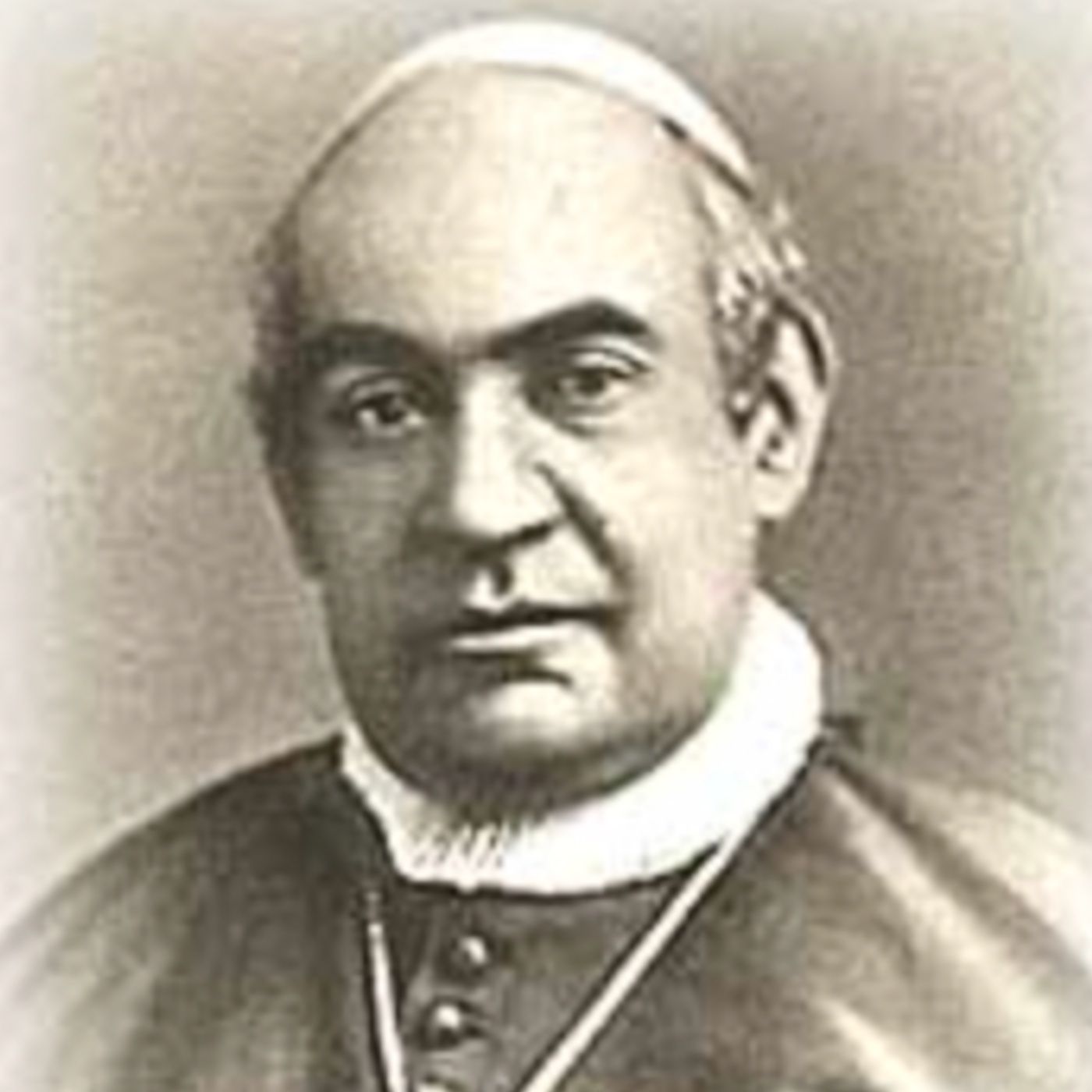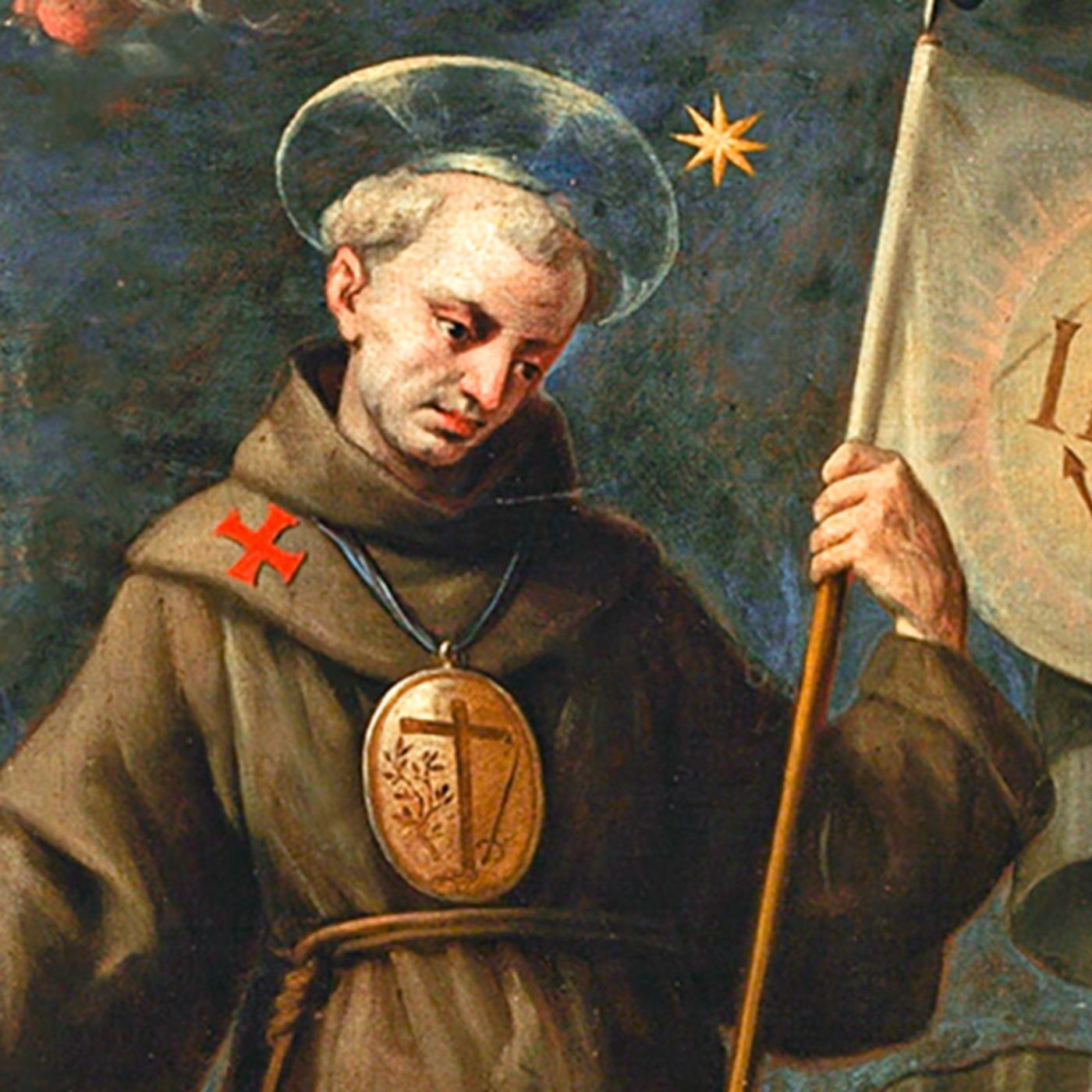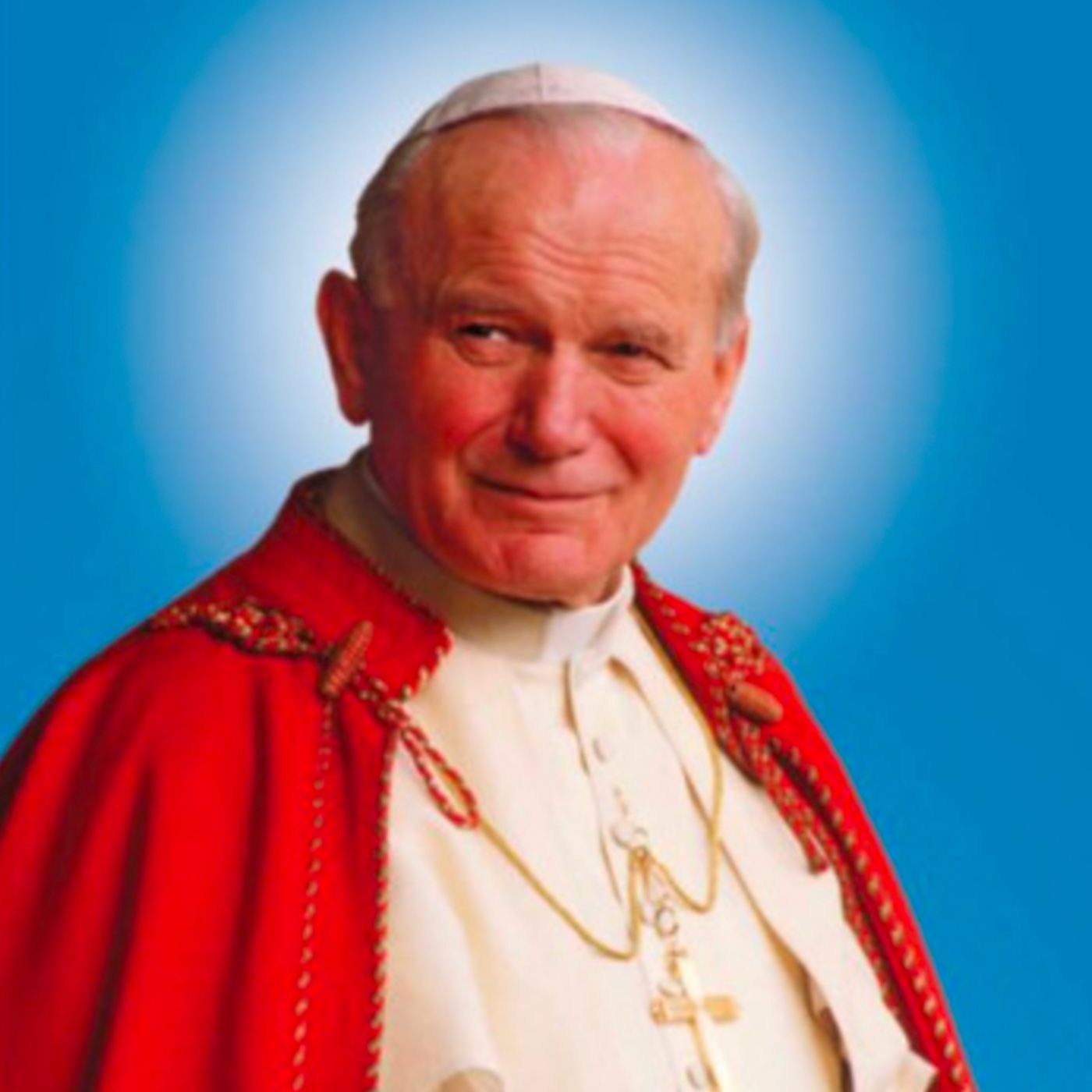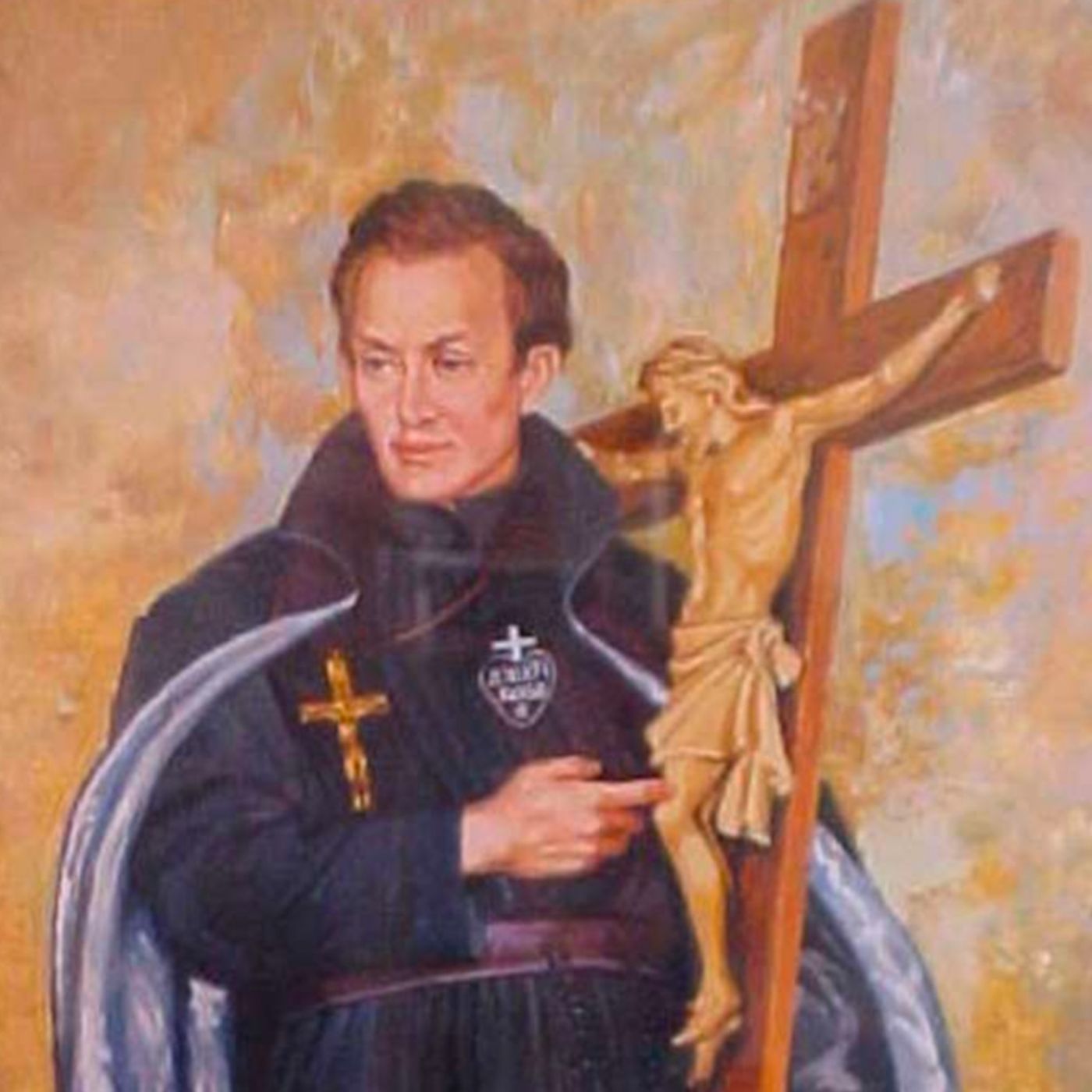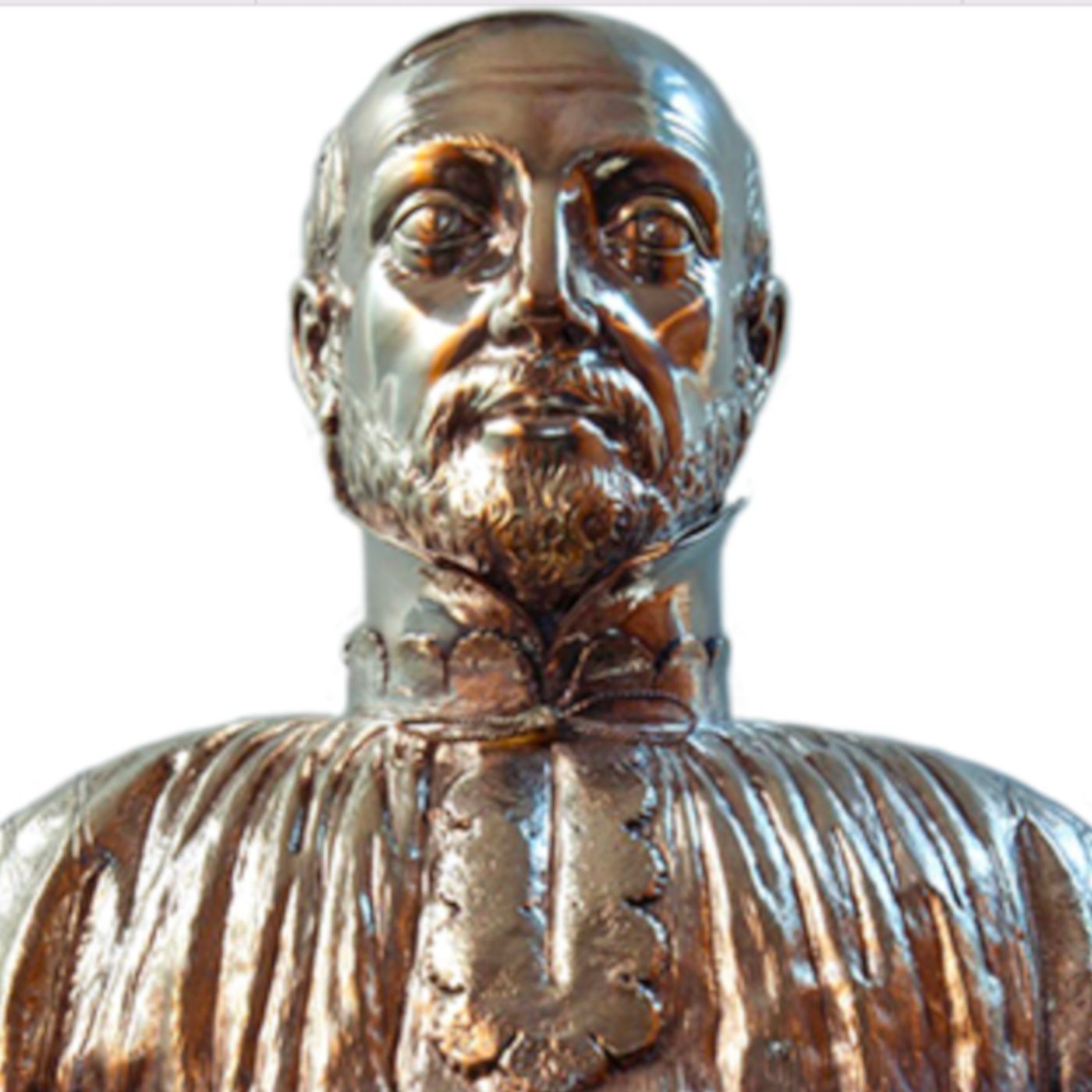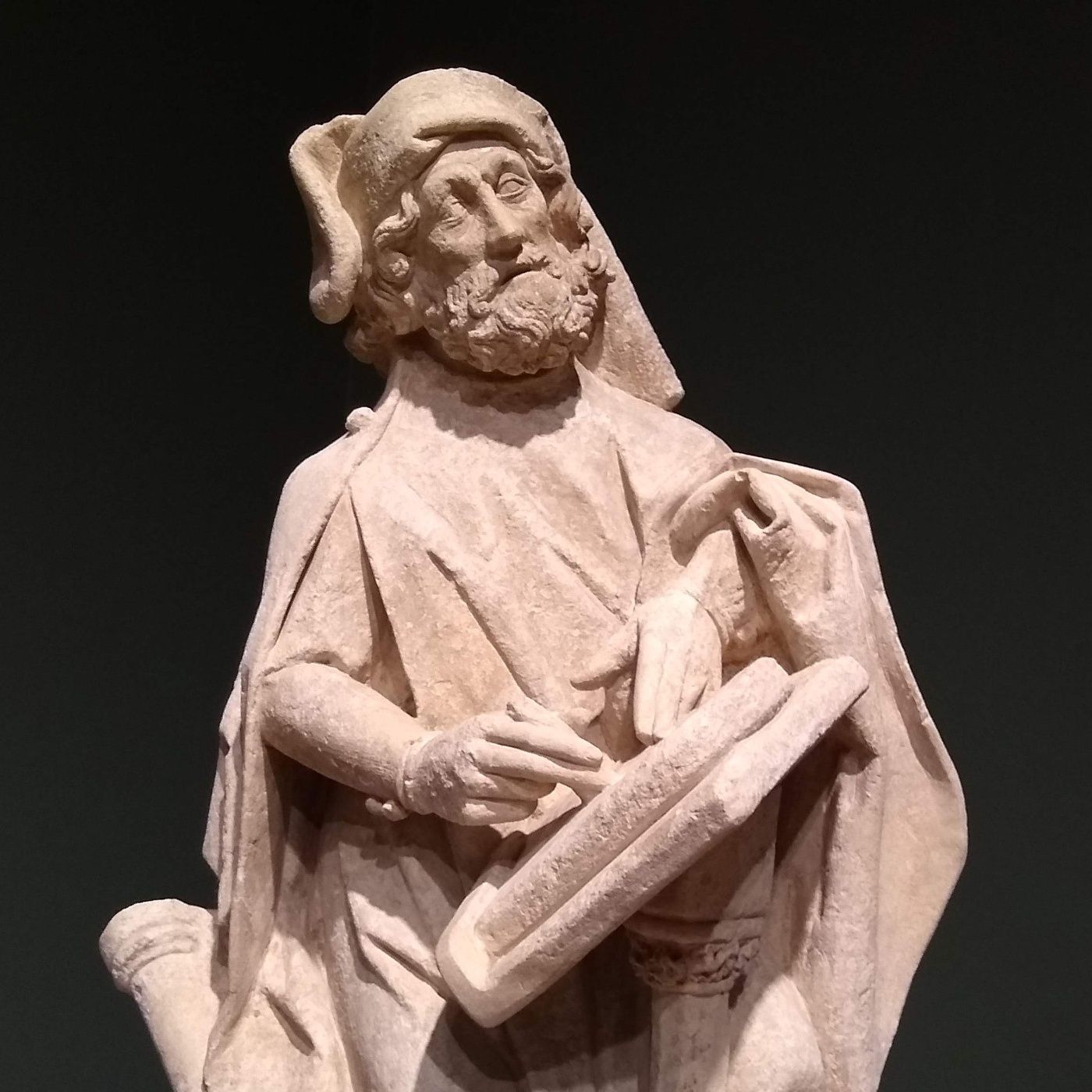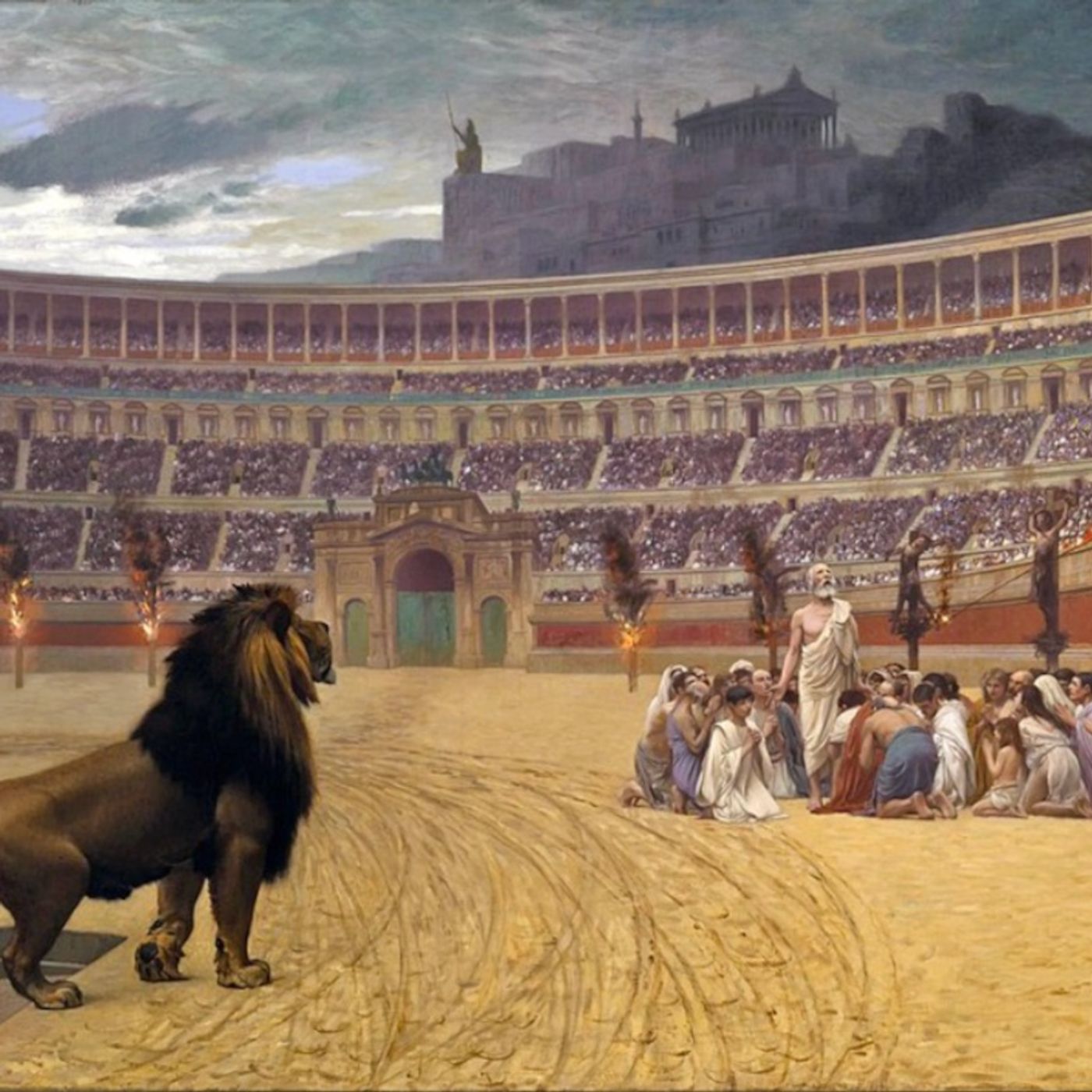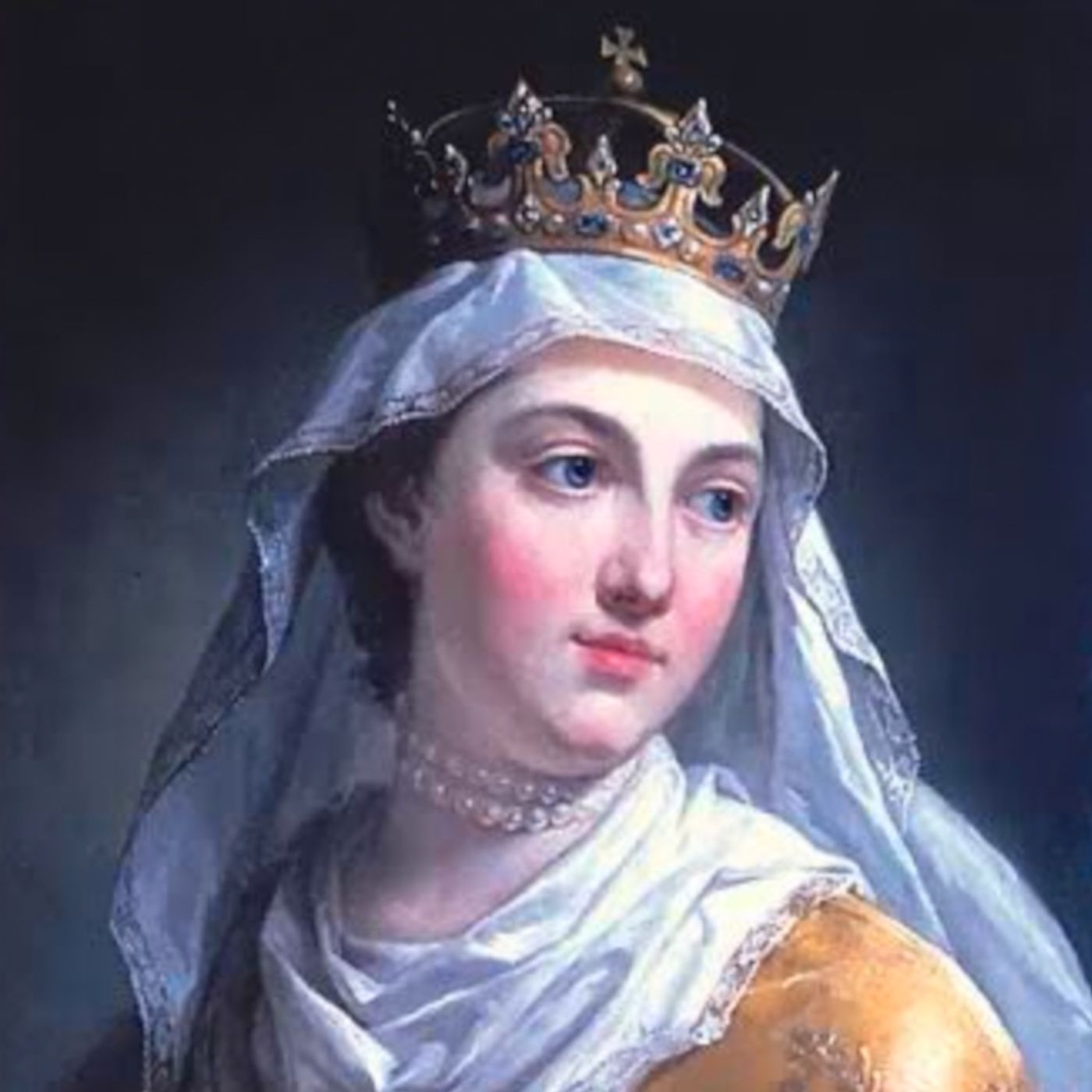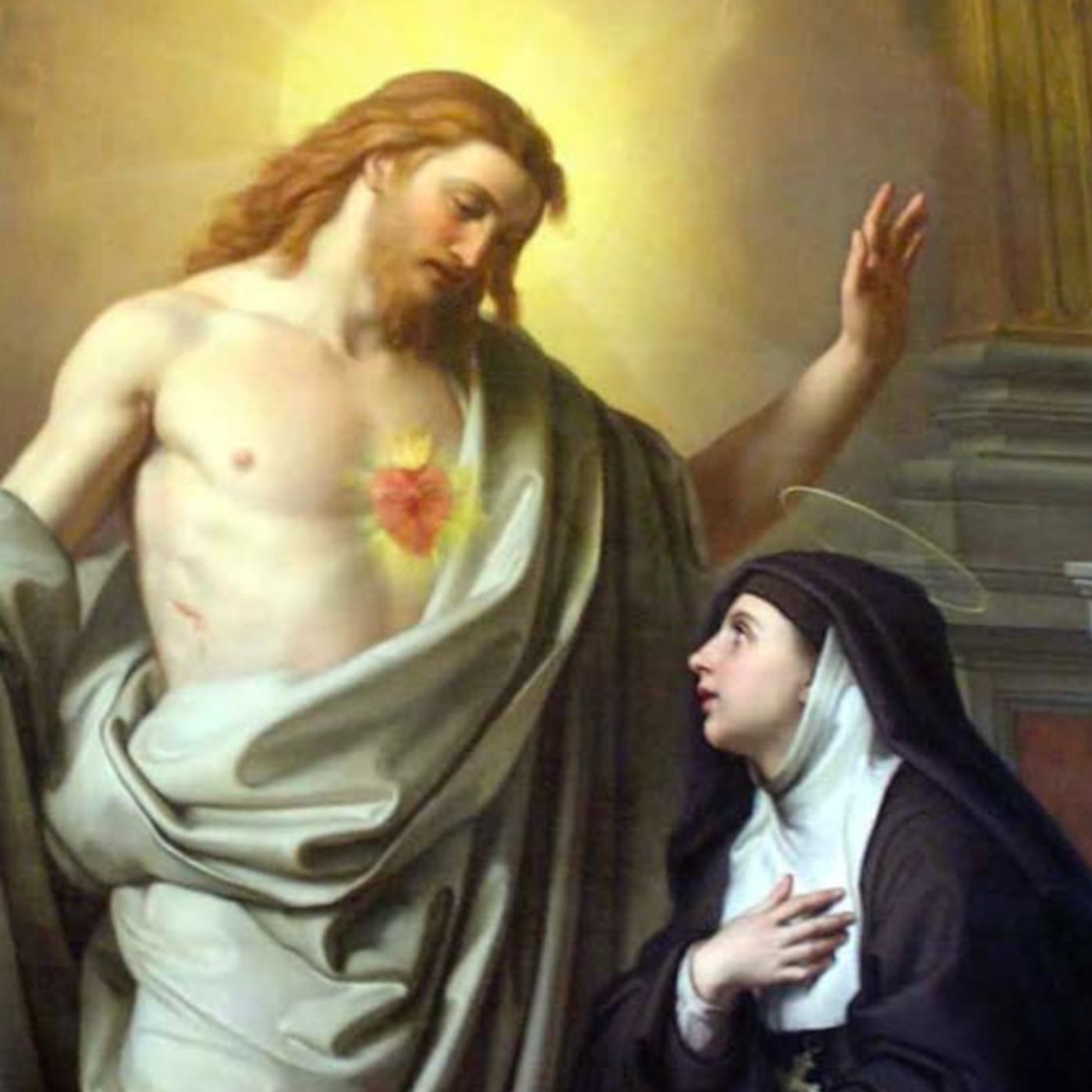Discover Catholic Saints & Feasts
Catholic Saints & Feasts

Catholic Saints & Feasts
Author: Fr. Michael Black
Subscribed: 49Played: 1,133Subscribe
Share
© Copyright Fr. Michael Black
Description
"Catholic Saints & Feasts" offers a dramatic reflection on each saint and feast day of the General Calendar of the Catholic Church. The reflections are taken from the four volume book series: "Saints & Feasts of the Catholic Calendar," written by Fr. Michael Black.
These reflections profile the theological bone breakers, the verbal flame throwers, the ocean crossers, the heart-melters, and the sweet-chanting virgin-martyrs who populate the liturgical calendar of the Catholic Church.
These reflections profile the theological bone breakers, the verbal flame throwers, the ocean crossers, the heart-melters, and the sweet-chanting virgin-martyrs who populate the liturgical calendar of the Catholic Church.
268 Episodes
Reverse
November 15: Saint Albert the Great, Bishop and Doctorc. 1206–1280Optional Memorial; Liturgical Color: WhitePatron Saint of natural scientistsHe knew everything, taught Aquinas, and placed his complex mind at the Church’s serviceSaint Francis de Sales wrote that the knowledge of the priest is the eighth Sacrament of the Church. If that is true, then today’s saint was a sacrament unto himself. There was little that Saint Albert did not know and little that he did not teach. His mastery of all the branches of knowledge of his age was so manifest that he was called “The Great” and the “Universal Doctor.”Albert was born in Germany and educated in Italy. During his university studies, he was introduced to the recently founded Dominican Order and joined their brotherhood. While continuing his long course of formal studies, Albert was sent by his superiors to teach in Germany. He spent twenty years as a professor in various religious houses and universities until he finally obtained his degree and began to teach as a master in 1248. His most famous student was the Italian Dominican Thomas Aquinas, whose rare intellectual gifts Albert recognized and cultivated. Albert was also made the Prior of a Dominican Province in Germany, was a personal theologian and canonist to the Pope, preached a Crusade in Germany, and was appointed the Bishop of Regensburg for less than two years before resigning. Albert was neither ruthless nor politically minded, and the complex web of elites who had interests in his diocese required a bishop to display a sensitivity to power relationships which was not among Albert’s skills.After his short time as a diocesan bishop, Albert spent the rest of his life teaching in Cologne, punctuated by travels to the Second Council of Lyon in 1274 and to Paris in 1277 to defend Aquinas from his theological enemies. Albert’s complete works total thirty-eight volumes on virtually every field of knowledge known to his age: scripture, philosophy, astronomy, physics, mathematics, theology, spirituality, mineralogy, chemistry, zoology, biology, justice, and law. Albert’s assiduous study of animals, plants, and nature was groundbreaking, and he debunked reigning myths about various natural phenomena through close personal observation. He devoured all the works of Aristotle and organized and distilled their content for his students, re-introducing the great Greek philosopher to the Western world forever and always. This life-long project of philosophical commentary was instrumental in grounding subsequent Catholic theological research on a wide and sturdy platform of critical thinking, which has been a hallmark of Catholic intellectual life ever since.Albert’s comprehensive approach to all knowledge contributed to the flourishing of the nascent twelfth-century institutions of learning known as universities. The “uni” in university implied that all knowledge was centered around one core knowledge—that of God and His Truth. The modern understanding is that a “multiversity” is merely an administrative forum in which numerous branches of knowledge spread out in pursuit of their separate truths unhinged from any central focus or purpose.Saint Albert’s prodigious mind never ceased to be curious. Every bit of knowledge which he culled led him to gather even more. His encyclopedic knowledge embraced reality itself as one sustained instance of God loving the world. No bifurcation, no subcategories, no “my truth” and no “your truth.” God was real and God was knowable. Reality and Truth were one for Albert and his era, and autonomous reason could be trusted to lead the honest, rational seeker to those eternal verities. Albert was beatified in 1622 and was canonized and named a Doctor of the Church in 1931.Saint Albert the Great, your knowledge of the sacred and physical sciences understood God as a total reality. Through your divine intercession, help the faithful to see reality not as divided but as an expression of the Trinitarian God, a knowable person who is accessible to reason.
November 13: Saint Frances Xavier Cabrini, Virgin (USA)1850–1917USA Memorial; Liturgical Color: WhitePatron Saint of immigrants and hospital administratorsIndomitable and charismatic, she moved mountains for GodThe hurricane of apostolic activity that was Mother Cabrini motored powerfully over the Atlantic Ocean, gathered force as it swept into the American heartland, and then rested there, perpetually oscillating, for almost three decades. A serene eye, though, hovered at the center of this low roar of activity. Mother Cabrini accomplished so much, so well, and so quickly, precisely because her soul rotated calmly around a fixed point, the immovable Christ. A peaceful focus on God in the morning rained down a storm of good works in the afternoon and evening.Frances Cabrini was the tenth child born into a rural but well-to-do family in Northern Italy. Her uncle, a priest, had a deep influence on her, as did the Daughters of the Sacred Heart, whose school she attended as a teen. After graduation, she petitioned for entrance into the Daughters and, later, the Conossian Sisters. But Frances’ tiny frame had never quite conquered the frailty resulting from her premature birth. These Orders needed robust women capable of caring for children and the infirm. Nuns did not take vows so they could take care of other nuns. So even an application from an otherwise stellar candidate like Frances was reluctantly rejected due to her ill health. Frances eventually obtained a position as the lay director of an orphanage. Her innate charisma pulled people toward her like a magnet, and soon a small community of women grew up around her to share a common religious life.As proof of her apostolic zeal, Frances added “Xavier” to her baptismal name in honor of the great missionary Saint Francis Xavier. She then founded a modest house, along with six other women, dedicated to serving in the Church’s foreign missions. Frances was clearly the leader and wrote the new Institute’s Rule. Eventually the small Order received Church approval as the Missionary Sisters of the Sacred Heart of Jesus. The sisters’ excellent work became well known, and in 1887 Mother Cabrini, the Superior, met with Pope Leo XIII in Rome to inquire about her sisters evangelizing in China. The Pope listened to her in silence and then concluded simply: Her mission was “not to the East, but to the West.” The plug had been pulled on entire regions of Italy and their populations drained away to the United States. They needed the Church’s attention.In 1889 Mother Cabrini left for the United States with six sisters. Disembarking from the ship in New York Harbor, they were met by not even a single person. No one expected them, and no one welcomed them. The Archbishop was cold and told Mother Cabrini that he wanted Italian priests, not sisters, and that her ship was still docked in the harbor if she wanted to return to Italy. She replied “I have letters from the Pope” and stayed and persevered amidst the most extreme hardships.Starting from absolute zero, Mother Cabrini miraculously began her work among Italian immigrants. She would work almost exclusively with, and for, Italians the rest of her life. She begged, pleaded, and cajoled. She pulled every lever of charm and persuasion she could reach. It worked. Her deep spirituality and constant state of motion soon put her in contact with Italian benefactors eager to help their own. Mother Cabrini was then seemingly everywhere, doing everything. She founded hospitals, orphanages, schools, workshops, and convents in New York, Denver, Cincinnati, Pittsburg, St. Louis, San Francisco, and Chicago. She trekked to Nicaragua, Argentina, and Brazil. She sailed back to Italy nine times. She became an American citizen but remained fully Italian in her identity and a source of pride for America’s many “Little Italies.” Mother Cabrini’s relentless energy, remarkable administrative skills, shrewdness, humility, and charisma quickly built an empire of charity. When she died in Chicago, she left behind sixty-seven institutions and a robust Order of dedicated nuns. On July 7, 1946, she became the first United States citizen to be canonized a saint.Mother Cabrini, you were indefatigable in your work for Christ and the Church. You knew no rest, no stranger, and no obstacle that could not be overcome. Inspire all evangelizers and teachers to be so brave and tireless in their service.
November 12: Saint Josaphat, Bishop and Martyr1580–1623Memorial; Liturgical Color: RedPatron Saint of reunion between Orthodox and CatholicsA holy bishop is murdered for unifying East and WestSaint Josaphat died for something few in his era died for—ecumenism. In fact, the word ecumenism did not even exist when Josaphat was martyred. Josaphat was born in Ukraine but grew to manhood working a trade in Vilnius, Lithuania. In his late teens, he felt called to be a monk, so he rejected an offer of marriage and joined a monastery in Vilnius in 1604. Josaphat’s austerities, intelligence, and prayerfulness made him a natural leader, and he was duly ordained a deacon and priest and earned a reputation as an effective preacher.But it was a historic decision by Orthodox religious leaders, about ten years before Josaphat became a monk, that would bend the arc of his life and eventually lead to his death. In 1595 the Orthodox Metropolitan of Kiev and five other Orthodox bishops representing millions of Ruthenian (Ukrainian and Belarusian) faithful met in the city of Brest and signed a declaration of their intention to enter into union with the Bishop of Rome. The Pope accepted their conversion from Orthodox to Catholic, while allowing them to keep their Byzantine liturgical rites and traditions. The Union of Brest was a one-of-a-kind event. Yet it triggered Orthodox violence and bitterness toward the Catholic Church which has endured into modern times.Josaphat joyfully embraced the entrance of his native Orthodox faith into the Catholic fold. But he also insisted that the Eastern traditions of his pan-Slavic people should perdure, and be respected, while his people ecclesiastically migrated into the paddock of the Roman Pontiff. Unity, yes. Uniformity, no. The Church, historically, had long been composed of various liturgical traditions reflecting its numerous cultures. The Latin Rite, though, eventually predominated as Western nations grew stronger and colonized huge chunks of the world. The Union of Brest’s careful balance of accepting theological and jurisdictional unity with Rome while insisting on liturgical distinctiveness was confusing to many of the faithful Slavic peasants of Northeastern Europe. Nonetheless, when Josaphat was named a Bishop in present day Belarusia, he continued to champion the union with Rome with all his considerable powers and was largely successful in curtailing Orthodox clergy from exercising ministry in his diocese.Because he represented something new, an Eastern Rite Catholic, Josaphat was misunderstood by his co-religionists who should have supported him the most, particularly Polish and Lithuanian bishops and princes. The tensions of the time came to a head when an Orthodox bishop established a competing diocesan and parish structure alongside that of Josaphat’s diocese and parishes. The faithful experienced two church structures that were virtually identical in their liturgy but divergent in their leaders and lines of authority. In response to Orthodoxy’s aggressive incursion into his ecclesial territory, Josaphat put his usual vigor into preaching and teaching the importance of union with Rome. But in 1623, while seeking to stop an Orthodox priest from secretly ministering in his jurisdiction, Josaphat was ambushed by Orthodox faithful who conspired with their leaders to rid themselves of this thief of souls. Saint Josaphat was brutally attacked by a mob, his head was cleaved by an axe, and his body dumped into a river. Josaphat was beatified in 1643 and canonized in 1867. In the twentieth century, Josaphat’s remains were brought to Rome and buried under the altar of Saint Basil in St. Peter’s Basilica.Saint Josaphat, you gave your life attempting to bring East and West together. Give us your spirit of unity so that our prayers bring all Christians into common union under the leadership of a common head, the successor of Saint Peter.
November 11: Saint Martin of Tours, Bishopc. 336–397Memorial; Liturgical Color: WhitePatron Saint of France, soldiers, and conscientious objectorsHe gave away half of his cloak and then all of his life Many great and holy men and women are unknown to history because they lacked the one crucial ingredient to become well known—a biographer. Today’s saint was one of the fortunate ones. A historian named Sulpicius Severus personally knew and interviewed Martin in the last years of Martin’s life and put it all on parchment. In an age of few books, Sulpicius’ Life of Saint Martin was a blockbuster. Over many decades and centuries, it slipped into the bloodstream of European culture until, by the medieval age, the Life was standard reading in all monasteries. Virtually every priest and monk in Europe was deeply familiar with the details of the life of Saint Martin of Tours.The typical biography of a saint for the first few centuries of Christianity worked from the back to the front, from death to life. The real drama was how the saint died, not how he or she lived. Tales of bloody martyrdom, solitary exile, starvation and exposure were as moving and unfortunate as they were common. The Life of Saint Martin told of Martin’s adventures and heroism in living the faith, not just about his last few breaths. He was a saint for the new age of legalized Christianity. Martin of Tours died in his bed.Martin was born to pagan parents in present-day Hungary but desired to become a Christian from a young age. His father resisted his son’s holy desires and obliged Martin to follow in his footsteps and serve as a soldier in Rome’s Imperial Guard. Martin was serving in France when the most iconic moment of his life took place. Martin was slowly approaching the city gates of Amiens on horseback one cold winter evening. A half-naked man shivered on the ground, begging for help. No one stopped. No one helped. No one cared. So Martin, clad as a soldier, pulled the cloak from his back, drew his sharp sword from its scabbard, and sliced his cloak in two. The poor man’s skeletal frame was covered with just half of the cloak. That same night, when Martin fell asleep, he had a dream. Jesus appeared to him clad in the cloak and said “Martin, still a catechumen, covered me with this garment.” Upon awakening, Sulpicius tells his reader, “Martin flew to be baptized.”Martin subsequently befriended one of the great men of Gaul of that era, Saint Hilary of Poitiers, who ordained him into minor orders. After various apostolic adventures, Martin was chosen the Bishop of Tours in 372. In his twenty-five years as bishop, Martin was zealous, and jealous, for the House of the Lord. He aggressively tore down pagan temples, which he understood to be dedicated to demons. He traveled incessantly and was untiring in evangelizing the people of the countryside of Gaul and in founding churches. Martin also developed a reputation as a miracle worker and prophet. He cured the eye problems of Saint Paulinus of Nola, Saint Augustine’s good friend.By the time of his peaceful death, Bishop Martin of Tours had a well-deserved reputation for holiness. Devotion to Martin spread as Sulpicius’ biography was copied and shared. Numerous churches were named in Martin’s honor in every country of Europe. England had one hundred seventy-three churches dedicated to Martin of Tours in 1800. The Shrine over Martin’s tomb was one of the most popular pilgrimage destinations in all of Europe until France was riven by Reformation violence in the 1560s. In an interesting vestige of Martin’s enduring historic importance, Martin’s feast day in the Breviary is more fully elaborated with prayers and antiphons than almost any comparable saint on the Church’s calendar.Saint Martin of Tours, your encounter with the beggar has fired the imagination of countless Christians. You were generous in every single way in living your faith. Through your intercession in heaven, assist us now to see Jesus in everyone, just as you did then.
November 10: Saint Leo the Great, Pope and DoctorLate Fourth Century–461Memorial; Liturgical Color: WhitePatron Saint of popes and confessorsA Pope vigorously exercises his universal ministry and defines Christ’s divinityHistory has so far conferred on just two popes the title of “Great,” and today’s saint is one of them. Leo the Great’s origins are obscure, so nothing is known with certainty of his early life. He was, though, ordained into Holy Orders and rose to prominence as a papal advisor in the 420s. He corresponded with imminent theologians and acted as a papal emissary before he was elected Bishop of Rome in 440. Leo was a pope’s pope. He expanded the power and influence of the papacy at every opportunity. The Church’s earliest theological tradition rooted Rome’s primacy in the double martyrdom of Saints Peter and Paul in the eternal city. No other city could claim to have been sanctified by the blood of two martyrs. Pope Leo, however, emphasized what was to become a more dominant argument for papal supremacy—that the pope’s authority is not rooted merely on the historical fact that Peter and Paul died on roman ground but on the theological fact that the Bishop of Rome occupies the Chair of Saint Peter.By word and action, Leo repeatedly taught that the pope’s power was unequaled and without borders, that the pope was the head of all the world’s bishops, and that every bishop could have direct recourse to the pope, and not just to the local archbishop, in disputed matters. Pope Leo thus accelerated an existing tendency consolidating church governance and authority under a Roman umbrella. Regional or even local decision-making by individual dioceses or groups of dioceses did occur. But in important theological, moral, or legal matters that affected the entire church, every bishop rotated in a steady orbit within the powerful gravitational field of Rome. Pope Leo also enacted a more aggressive papal role directly overseeing and enforcing discipline over bishops, intervening in and settling disputes. The Catholic Church is not an international federation of dioceses, after all. It needs a strong center of gravity to ensure that centrifugal forces do not unwind the universal church into a galaxy of independent national churches, united in name only.Nowhere was Leo’s authority exercised more clearly and successfully than at the Council of Chalcedon in 451. The theological issue at stake concerned Christ’s divinity. Some theologians in the East were espousing the Monophysite heresy, which argued that Christ had only one divine nature. The Council consisted of six hundred bishops from the Eastern Roman Empire, with a handful from Africa. Leo sent three legates from Italy who were treated with all honor and respect as representatives of Peter’s successor. They read out loud to the Council Fathers the “Tome of Leo” on the Incarnation. The pope’s words laid out, with force, clarity, and eloquence, that Jesus Christ had both a divine and a human nature “without confusion or admixture.” When the legates finished reading, the bishops’ common response to the pope’s words was “This is the faith of the fathers; this is the faith of the apostles… Let anyone who believes otherwise be anathema. Peter has spoken through the mouth of Leo.” The Tome of Leo from then on became the teaching of the Catholic Church. If Christ were not truly man, or not truly God, the babe in the manger would be just another child whose birth was no more worthy of celebration than that of Julius Cesar, Gandhi, or Marco Polo. Pope Leo saved Christmas.In 452 Pope Leo entered the history books when he rendezvoused with Attila the Hun in Northern Italy, convincing him not to sack Rome. A legend says that Attila turned back because he saw Saints Peter and Paul standing right behind Leo. Pope Leo governed the Church as the Western Roman Empire was slowly disintegrating. He was courageous in alleviating poverty, protecting Rome from invaders, and maintaining Rome’s Christian heritage. While outstanding as an effective and practical leader, Pope Leo is most known for the concision, depth, and clarity of his sermons and letters, for which he was declared a Doctor of the Church in 1754. He was the first pope, after Saint Peter himself, buried in Saint Peter’s Basilica. His remains lie under a beautiful marble relief sculpture of his famous meeting with Attila.Pope Saint Leo the Great, give to the Pope and all bishops pastoral hearts, sharp minds, and courageous wills, so that they may lead the Church by personal example, by correct teaching, and by their caring little for worldly criticism.
November 9: Dedication of the Lateran BasilicaFeast; Liturgical Color: WhiteA venerable basilica is the mother of all churchesIn the eighth chapter of his Confessions, Saint Augustine relates the story of an old and learned Roman philosopher named Victorinus. He had been the teacher of many a Roman senator and nobleman and was so esteemed that a statue of him was erected in the Roman Forum. As a venerable pagan, Victorinus had thundered for decades about the monster gods, dark idols, and breathless demons in the pantheon of paganism. But Victorinus assiduously studied Christian texts and whispered to a friend one day, “You must know that I am a Christian.” The friend responded, “I shall not believe it…until I see you in the Church of Christ.” Victorinus responded mockingly, “Is it then the walls that make Christians?” But in his grey hairs, Victorinus finally did pass through the doors of a Catholic church to humbly bow his head to receive the waters of Holy Baptism. There was no one who did not know Victorinus, and at his conversion, Augustine writes, “Rome marveled and the Church rejoiced.”A church’s walls do not make one a Christian, of course. But a church has walls nonetheless. Walls, borders, and lines delimit the sacred from the profane. A house makes a family feel like one, a sacred place where parents and children merge into a household. A church structurally embodies supernatural mysteries. A church is a sacred space where sacred actions make Christians unite as God’s family. Walls matter. Churches matter. Sacred spaces matter. Today the Church commemorates a uniquely sacred space, the oldest of the four major basilicas in the city of Rome. The Lateran Basilica is the Cathedral of the Archdiocese of Rome and thus the seat of the Pope as Bishop of Rome.A basilica is like a church which has been made a monsignor. Basilicas have certain spiritual, historical, or architectural features by which they earn their special designation. Considered only architecturally, a basilica is a large, rectangular, multi-naved hall built for public gatherings. When Christianity was legalized, its faithful spilled out of their crowded house churches and into the biggest spaces then available, the basilicas of the Roman Empire. If Christians had met in arenas, then that word would have been adopted for ecclesial usage instead of basilica.The Laterani were an ancient Roman noble family whose members served several Roman Emperors. The family built a palace carrying their name on a site which in the fourth century came into the possession of the Emperor Constantine, who then turned it over to the bishop of Rome. An early pope enhanced and enlarged the basilica style palace into a large church, which, in turn, became the oldest and most important papal church in the eternal city. The popes also began to personally reside in the renovated Lateran palace. By medieval times, the Basilica was rededicated to Christ the Savior, Saint John the Baptist, and Saint John the Evangelist. The popes lived at the Lateran until the start of the Avignon papacy in present day France in 1309.With the Avignon papacy ensconced far from Rome for seven decades, the Lateran Basilica was damaged by fires and deteriorated so sadly that by the time the popes returned to Rome in 1377, they found the Basilica inadequate. An apostolic palace was eventually built next to St. Peter’s Basilica on the Vatican hill and has been the seat of the successors of Saint Peter ever since. The Lateran Basilica retains its venerable grandeur, despite now being a baroque edifice with only a few architectural traces of its ancient pedigree. Beautiful churches are like precious heirlooms passed down from one generation to the next in God’s family. Walls do not make us Christians, but walls do clarify that certain sacred rituals are practiced in certain sacred spaces and in no others. A family in its home. A judge in his court. A surgeon in her operating room. An actor on his stage. God on His altar. We come to God to show Him the respect He deserves. He is everywhere, yes, but He is not the same everywhere. And we are not the same everywhere either. We stand taller and straighter when we step onto His holy terrain.Heavenly Father, we praise You more worthily when we are surrounded by the holy images in Your holy churches. Through Your grace, inspire us to render You due homage in the houses of God where Your presence burns brighter and hotter than anywhere else.
November 4: Saint Charles Borromeo, Bishop1538–1584Memorial; Liturgical Color: WhitePatron Saint of bishops, cardinals, and seminariansA young nobleman becomes a Cardinal, exemplifies holiness, and reforms the ChurchToday’s saint was born in a castle to an aristocratic family. His father was a count, his mother a Medici, and his uncle a pope. This last fact was to determine the trajectory of Charles Borromeo’s entire life. Pope Pius IV (1559–1565) was the brother of Charles’ mother. At the tender age of twelve, Charles received the external sign of permanent religious commitment, the shaving of the scalp known as tonsure. He was industrious and extremely bright and received advanced degrees in theology and law in his native Northern Italy. In 1560 his uncle ordered him to Rome and made him a Cardinal at the age of just twenty-one, even though Charles was not yet ordained a priest or bishop. This was brazen nepotism. But in this instance it was also genius. The Cardinal-nephew was a man of rare gifts, and his high office afforded him a wide forum to give those gifts their fullest expression.At the Holy See, Charles was loaded down with immense responsibilities. He oversaw large religious orders. He was the papal legate to important cities in the papal states. He was the Cardinal Protector of Portugal, the Low Countries, and Switzerland. And, on top of all this, he was named administrator of the enormous Archdiocese of Milan. Charles was so bound to his Roman obligations, however, that he was unable to escape to visit Milan’s faithful who were under his pastoral care. Non-resident heads of dioceses were common at the time. This pained Charles, who would only be able to minister in his diocese years later. Cardinal Borromeo was a tireless and methodical laborer in the Holy See, who nevertheless always found ample time to care for his own soul.When Pope Pius IV decided to reconvene the long-suspended Council of Trent, the Holy Spirit placed Cardinal Borromeo in just the right place at just the right time. In 1562 the Council Fathers met once again, largely due to the energy and planning of Charles. In its last sessions, the Council completed it most decisive work of doctrinal and pastoral reform. Charles was particularly influential in the Council’s decrees on the liturgy and in its catechism, both of which were to have an enduring and direct influence on universal Catholic life for over four centuries. Charles was the driving force and indispensable man at the Council, yet he was still just in his mid-twenties, being ordained a priest and bishop in 1563 in the heat of the Council’s activities.In 1566, after his uncle had died and a new pope granted his request, Charles was at last able to reside in Milan as its Archbishop. There had not been a resident bishop there for over eighty years! There was much neglect of faith and morals to overcome. Charles had the unique opportunity to personally implement the Tridentine reforms he had played such a key role in writing. He founded seminaries, improved training for priests, stamped out ecclesiastical bribery, improved preaching and catechetical instruction, and combatted widespread religious superstition. He became widely loved by the faithful for his personal generosity and heroism in combating a devastating famine and plague. He stayed in Milan when most civil officials abandoned it. He went into personal debt to feed thousands. Charles attended two retreats every year, went to confession daily, mortified himself continually, and was a model Christian, if an austere one, in every way. This one-man army for God, this icon of a Counter-Reformation priest and bishop, died in Milan at the age of forty-six after his brief but intense life of work and prayer. Devotion to Charles began immediately, and he was canonized in 1610.Saint Charles Borromeo, your personal life embodied what you taught. You held yourself and others to the highest standards of Christian living. From your place in heaven, hear our prayers and grant us what we ask, for our own good and that of the Church.
November 3: Saint Martin de Porres, Religious1575–1639Optional Memorial; Liturgical Color: WhitePatron Saint of mixed-race peoples and barbersA humble, mixed-race Dominican brother works miraclesToday’s saint was born in colonial Lima, Peru, to a well-connected Spanish father and a black Panamanian mother who had been a slave. While parentage is revealing, focusing uniquely on someone’s origins can also be a lazy shortcut which reduces a complex person to mere bloodlines, leaving aside a thousand more compelling factors that make a life interesting. It would be difficult, however, to overemphasize just how much Martin de Porres’ mulatto origins (Spanish and black) impacted his life. Even though his father was perfectly well known, Martin’s baptism registration reads “Son of an unknown father,” making Martin illegitimate, a severe disadvantage. To be half black in colonial Latin America was to start life’s race ten miles behind. Catching up to the Spanish-born colonists (Peninsulares) or to the locally born pure-blood Spanish (Criollos) would be impossible. On the many-runged ladder of social acceptability in the Spanish colonies, Martin was just above an African slave.Martin’s father did make sure, however, that his son received a good education and enrolled him as a barber-surgeon apprentice in Lima. Martin learned how to set fractures, dress wounds, and treat infections according to the best practices of his era. And from his mother, he learned some unconventional herbal remedies that rounded out his more traditional medical education. These skills would hold Martin in good stead throughout his life. He treated the sick and injured regularly and, over time, earned a reputation as an extraordinary healer. He aided in founding a hospital and orphanage in Lima, distributed food to the poor, and cared for recently arrived African slaves. His extraordinary charity was his greatest attribute. You need candles? Of course. Blankets? One moment, please. Shoes and a comb? I’ll be back. Miracles and cures? Yes, God bless you. Martin de Porres became famous for doing many things—very many things—and doing them all well and with a smile.In addition to his life of interrupted service, Martin was also a spiritual warrior. He became a Dominican lay brother but never a priest. He lived in community and proudly wore the Dominican habit. He had a self-deprecating sense of humor that jokingly acknowledged his lowly mulatto status. He abstained from meat, spent long hours in prayer before the Blessed Sacrament, and was witnessed displaying supernatural gifts. He levitated. He bilocated. His room filled with light. He possessed knowledge he could in no way have possessed naturally. His wide array of natural and supernatural gifts made him famous in Lima. When his life came to an end at the age of sixty, his body was publicly shown, and pieces of his habit were discreetly clipped off as relics.Martin de Porres, canonized in 1962, was among the first generation of saints from the New World, along with his contemporaries Saints Rose of Lima and Turibius of Mogrovejo. Martin was also the first mulatto saint. He lived a traditionally pious spirituality in keeping with the medieval saints of Europe. But he was not from Europe, did not enjoy a European education, and did not have pure European blood. Saint Martin proved the Catholic Faith could migrate across the Atlantic Ocean intact. The ancient faith found a home in a mulatto soul. Catholicism had successfully made the passage to a new land and immediately drove its roots deep into that land’s native soil, converting a new mixed-race people to an old religion, making Jesus Christ the Lord of Latin America. Saint Martin de Porres was a harbinger of many good things to come.Saint Martin de Porres, we present our humble petitions to you, so that your faith and humility may bring them to our Father in Heaven. You were close to both God and man on earth. Continue to be close to us as you live with the Lord in heaven and seek favors on our behalf.
November 2: The Commemoration of All the Faithful Departed(All Souls Day)Commemoration; Liturgical Color: White, Violet, or BlackThe earthly Church prays for the Church in Purgatory in hope of a reunion in HeavenEvery country has a civic feast day dedicated to soldiers who died for the nation. Every country has a tomb of the unknown soldier where an honor guard stands solemnly erect near an unnamed hero whose grave represents all the unknowns who never walked off the ship to hug their wife, who never met their parents at the airport and drove home. All Souls Day is like such Memorial Days and Tombs of the Unknown. Because of the Church’s ancient pedigree, timeless customs, and unmatched role in shaping cultures, it is more apt to say, though, that civic customs and ceremonies imitate the Church’s practice rather than the opposite.The Feast of All Souls is the Catholic Memorial Day. Today the Church commemorates the souls of all the baptized who have died and yet who do not yet enjoy life with God in heaven. It is Catholic teaching that souls needing post-death purification can benefit from the prayers, alms, sacrifices, and Mass offerings of souls on earth. The Old Testament recounts the Jewish belief that the deceased benefit from temple sacrifice made on their behalf (2 Maccabees 12:42–46). Continuing this Semitic practice, prayers for the dead were offered by Christians from the very earliest years of the Church. The walls of the Christian catacombs of Rome were crowded with innumerable marble plaques in succinct Latin praying for the dead. There has never been a time when the Church has not commemorated, remembered, and prayed for the dead.Few die with their souls so perfectly purified from sin and imperfection that they proceed directly to the Beatific Vision. No one is prepared for a ten-thousand-amp light to shine into their eyeballs the moment they awake. Nor at the moment of death would most be prepared for the intense light of God Himself to gaze into our imperfect souls. We would simply not be ready for such a holy searchlight examining our every dark corner. The soul first needs to be purified. Its sins must first be burned away in the fire of God’s merciful love. This is purgatory. It is the ante-chamber of heaven, the place of waiting and preparation where the soul is readied to enter and absorb the whitest of God’s light. But souls in purgatory have no free will or ability to atone by themselves for themselves. They depend on us. They advance in purification due to our prayers and offerings for them. This is why we pray for the dead and offer Masses for their advancement into heaven.The Feast of All Souls, then, is much more than a spiritual family reunion where we visit the graves of our ancestors and recall with a tear all the good times. All Souls Day longs for a deeper bond, for an ultimate reunion with God at the head of the family in heaven with all His saints and angels. The dark arts of pagandom understand well the role the dead play in the imagination of the living. Vampires, werewolves, ghosts, zombies, and witches surface in many cultures on this day. They manifest a frustrated, non-Christian longing for the afterlife. These characters are the living dead who inhabit the middle ground between earthly life and ultimate death. The undead, the forever young, the “after life but before judgment” souls lust after the flesh and blood of the living to preserve their immortality. In this imaginary world, death feeds on the sacrifice of life, especially young and beautiful life, so that dark powers can slake their thirst.Today we put such fiction to the side and mobilize Christian prayer and sacrifice for Christian souls on a Christian Feast. Through the Sacraments, grace, redemptive suffering, alms giving, good deeds, and fasting, we move through the shadowlands of occult fiction, horror movies, and vampire legends. The hidden land of the dead is not just beyond the edge of the woods or in the dark of night after the last ember of the campfire turns black. The Church offers mystery enough for everyone. The deathly battle of good and evil, of devils against angels, of sin against grace, and of the cross against temptation is not fiction. It’s as serious as cancer. In this supernatural arena, souls hang in the balance, with heaven or hell, eternal life or eternal death, resting on the scales. Today we put our fingers on that scale and tip the balance in favor of those we love who have gone before us.All Holy Souls, our prayers and Mass offerings are directed to you this day in the hope that what we do on earth may benefit your advancement toward a fully divine life in heaven where you may, in turn, pray that we may one day join you there.
November 1: All SaintsSolemnity; Liturgical Color: WhiteHeaven is populated with holy people known to God aloneMartyrs were so revered in the early Church that their places and dates of death were sanctified by the candles, prayers, and votive offerings of the faithful, grateful for their witness. So many were the martyrs, though, that by the early fourth century it became impossible to solemnize each individually on the Church’s crowded calendar. There thus arose, over centuries, and in different ways in different regions, the custom of commemorating the memory of all the holy ones on one specific day of the year. By the early eighth century, a Feast of All Saints was celebrated in Rome on November 1. The Feast was extended to the entire Church in the next century.The universal sanctoral calendar of the Catholic Church is like a saint’s All-Star team. Only the most talented make the cut. There are many more canonized saints besides those on the universal calendar. Some saints are commemorated only locally or regionally, others are historically obscure, and still others did not give a sufficiently universal witness to merit inclusion on the Church’s universal calendar. The Church defines a saint as a soul enjoying the Beatific Vision in heaven. So, besides the famous saints found on the universal calendar and the lesser-known saints not on that calendar, there are still many more souls in heaven not officially recognized as saints at all. These are the saints we celebrate in a particular way today.The Solemnity of All Saints commemorates all those holy men, women, children, martyrs, confessors, and unknown others who lived lives of such holiness that upon death they either entered directly into God’s presence in heaven or duly purified their soul of every imperfection in purgatory before then advancing into His presence. All-Star saints such as Saint Augustine and Saint Francis of Assisi stand shoulder to shoulder in heaven with forgotten grandmas, quiet uncles, and unknown martyrs. These unrecognized but holy souls did not convert entire tribes, found religious communities, or have their bones crushed by the jaws of lions in the arena. Maybe they just kept their mouth shut when they had just the right words to humiliate a family member. Magnanimity. Perhaps they cooked dinner night after night for their family out of a sense of duty, while they gazed out the kitchen window, dreaming of another life far away doing greater deeds. Humility. Or maybe they refused to cooperate with an immoral boss and lost their job, never to recover financially, their dreams ruined for a principled stance. Fortitude.The dense population of heaven is unknown to us on earth, but not to God, the audience of One we should most desire to please. There are as many pathways to God as there are people, since God wants to make a project of each and every one of us. All the saints lived heroic lives in their own unique ways. Some were the steeple to the village, seen by all and inspiring others to greatness. But most saints had lower profiles. They were more like the squat stone blocks forming the church’s foundation, silently holding up the entire structure. They received little notice or credit despite buttressing the entire building. Without their support, the church and all of its luster would collapse.Today we commemorate those silent and sturdy ones who, without cease and without complaint, buttressed the family, the marriage, the parish, the Church, the community, the faith. Among the communion of saints are some few illustrious citizens whose virtues sparkle on their special days. But today we honor, remember, and seek to imitate that broader population of heaven never raised to the public altars but who offered their lives in quiet ways to God. They received the Body of Christ and lived His teachings in an exemplary manner in season and out of season until all seasons converged and God called them back to Himself.All holy men and women, so close to us yet still so far, gather our prayers to yourselves and intercede in heaven on our behalf. May our holy desires be accomplished through that chorus of prayers you constantly present to the Father surrounded by all His angels in heaven.
October 28: Saints Simon and Jude, ApostlesFirst CenturyFeast; Liturgical Color: RedPatron Saints of hopeless causes (Jude) and tanners (Simon)The Apostles laid the foundation for the household of faithThere is often a crosshatch of bloody scratches on the right cheek of statues of the suffering Christ in Latin America. It’s called the “Judas Kiss,” a reminder of Judas Iscariot’s act of both affectionately greeting Christ and betraying Him in one sinister gesture. No one kneels before a statue of Judas Iscariot in a Catholic church. No one lights a candle to Judas asking that he restore their lost sight or heal their child’s cancer. But Judas Iscariot wasn’t the only Judas among the Twelve Apostles. Today’s Saint Jude (or Judas) was often confused with his evil contemporary. Since Judas Iscariot was so despised and ignored, and since he shared a name with the good Jude, a tradition gathered over the centuries of petitioning today’s saint only when all other saints had failed to answer one’s prayers. Saint Jude became the Patron Saint of Hopeless Causes, then, probably because of the faithful’s reluctance to seek the intercession of one whose misfortune it was to share a name with Christ’s betrayer. Out of confusion or an abundance of caution, Saint Jude thus became a saint of last resort. When the dam was barely holding, when a pulse could no longer be felt, when the rains wouldn’t come, a candle was lit to Saint Jude, hoping against hope, that he would respond.Saint Simon the Apostle is called the “Zealot” in Saint Luke’s Gospel. This may describe his zeal for the house of the Lord or denote his membership in a radical Jewish sect. Zeal is, in any case, a virtue. It must be joined with prudence to ensure that it does not offend for the sake of offending. A zealous soul will, however, lovingly provoke others to consider the things of God through his words, actions, and appropriate silences. Zeal for the house of the Lord has migrated to other concerns in many parts of today’s world. While religious zeal has unfortunately come to be understood as a negative virtue, zeal for planet earth and various other more “acceptable” causes are now seen as positive. The intentional disciple, however, understands zeal in its historical sense as a burning concern for perennial truths, not mere fads, and as a proactive form of love for all those things that lead mankind to God. God is a person, after all, and depends on His friends to defend Him.Saints Simon and Jude disappear from the pages of the Gospels after the brief mentions of their names. Nothing is known of either of them with any certainty, not even where they evangelized or where they met death. As Apostles, however, we know with certainty that they were key actors in laying the deep foundations of the Church in the rock-solid substrata of the Middle Eastern culture in which they lived. The Catholic Church is the household of faith. An earthly family is united by blood, while the theological family of the Church is united by the Sacraments and the Creed. But it is not sufficient for a family to be united by biological or theological DNA. A family is little if it is not a household. A household works together, prays together, and eats together. A household is where a family feels like a family. A boy may know who his father is, but if he doesn’t share everyday life with that father, their family relationship means little. It is in the household that life happens all over the globe. Mom and dad, sons and daughters, brothers and sisters, in the kitchen, around the table, in the garden, at Mass, a band united in both mundane and sacred duties. The Church is the household of faith where God’s family gathers week in and week out, century after century. Christians must not only be united intellectually, but must live united, and feel that unity in their bones. Today’s saints worked long ago to build the household we now enjoy. They dug the well so that we could pull up the water and drink. They planted so that we could reap. They lit the fire so that we could warm ourselves close to the flames, one universal family living in one universal household we call the Church.Saints Simon and Jude, we ask for your intercession in heaven as members of the Twelve Apostles. Approach the Lord Jesus with our needs in your hands. Answer the prayers we present. Fulfill the petitions we seek.
October 24: Saint Anthony Mary Claret, Bishop1807–1870Optional Memorial; Liturgical Color: WhitePatron Saint of textile merchants, the Catholic press, and vocational educatorsA tireless bishop founds an Order and moves mountainsToday’s saint was a finely tuned, high-octane engine of evangelization. Anthony Claret was from Catalonia, the region around Barcelona, Spain. He studied for the priesthood in Rome, was ordained in 1835, and then returned to Spain to spend ten years giving missions. In 1849 he founded the Congregation of the Missionary Sons of the Immaculate Heart of Mary, more commonly known as the Claretians in honor of their founder. The Order was particularly focused on publishing works of devotion and piety, books offering spiritual advice, and numerous pamphlets of basic catechesis. The Claretians filled a need and, as publishers, enjoyed enormous success. They published millions and millions of books and pamphlets. And all of this was spearheaded by Anthony, who not only generated doctrinal content but who also mastered the technical details of printing, learned the business side of the industry, and edited the published works himself.In 1851, when Anthony was appointed the Archbishop of Santiago de Cuba, the full array of his talents were put on display. He added the name “Mary” at his episcopal consecration and began a remarkably fruitful seven years as Archbishop. He traveled incessantly throughout his territory, restored the seminary, established hospitals and dozens of new parishes, and personally visited the sick and dying. He was ever present and provocative in his pastoral outreach, so much so that attempts were made on his life by the apathetic offended by his success. He was severely injured in one of these attempts but survived. Bishop Anthony was a true man of action. Creative ideas on how to spread the Gospel flowed constantly from his mind. Every tribulation and hardship was, for him, just an invitation to deeper commitment. It was nothing for Anthony to expend all of his energy one day and to wake up and do the same the next day. He was replenished by exhausting himself. In 1857 he resigned as Archbishop when he was recalled to Spain to become the personal chaplain to the Queen. This sedentary life was a cross for Anthony, who was a born missionary. But he continued to dedicate himself to apostolic activity as much as his court obligations allowed. At the Royal Monastery outside of Madrid where he was assigned, he set up a science library, a school for music and languages, a museum of natural history, and a fraternity composed of cultural leaders and intellectuals that grew to national prominence. Anthony was such a motor of evangelization and cultural advancement that he earned powerful enemies who feared his success. They eventually drove him from Spain to France, where he died in 1870.Like so many saints, Anthony Mary Claret was a double or triple threat. He was so multi-faceted, so skilled in so many diverse fields, that it is hard to believe that one man accomplished so much. He worked well, and he worked quickly. Like many other saints, behind Anthony’s labors was a regimented life of prayer, daily Mass, the rosary, fasting, spiritual reading, self-discipline and moral strictness. He was perpetually in the presence of God, and in his later years experienced spiritual ecstasies and performed miraculous healings. This incredible man of action and prayer was canonized in 1950.Saint Anthony Mary Claret, you outdid all your peers in dedication to Christ, Mary, and the Church. We pray that you intercede in heaven to give all bishops the graces and the skills to lead their flocks in prayer, education, and devotion as you did.
October 23: Saint John of Capistrano, Priest1386–1456Optional Memorial; Liturgical Color: WhitePatron Saint of military chaplains and juristsA worldly man becomes a Franciscan and a great preacherToday’s saint, like Saints Francis of Assisi, Maximilian Kolbe, Jerome Emiliani and many other male saints, was a prisoner of war. And just like all the others, imprisonment changed John of Capistrano forever. Being confined to the four walls of a prison made him realize how precious was the life that God had given him and how sad it was to waste it on frivolities. John had studied law before he was captured in battle and had even become the mayor of the major Italian city of Perugia. He was bright, energetic, and successful. Life was his oyster. John’s mature decision to enter religious life was not, then, an escape hatch from real life or the last exit on a dead-end road. He had silver in his hands but dropped it to stretch for the gold. In a shocking display of humility after giving his life to Christ, John mounted a donkey backwards and rode through the streets of his town wearing only a list of his worst sins. People ridiculed him and pelted him with mud and dung. In this forlorn state, he presented himself at the door of a Franciscan monastery to seek admission. He was immediately accepted. After studies, he was ordained a priest in 1421.John’s well of humility had no bottom, and his physical austerities never ceased. He continually mortified himself. He fasted, went barefoot, and slept little throughout his life. He was a protégé of the great Saint Bernardino of Siena, a fellow Franciscan. Like Bernardino, John became a renowned preacher and traveled throughout Central and Northern Europe drawing vast crowds. John lived poverty so totally that he, along with other reforming Franciscans of his generation, made it appear as if they were the measure for Christ’s poverty, instead of Christ being the example and inspiration for Franciscan poverty. John’s radical poverty and other reforming efforts were also the beginning of the divisions that would eventually cleave the body Franciscan into three distinct Orders.Already famous in his mid-sixties as a theologian, preacher, and inquisitor, John was appointed by the Pope to lead a team of Franciscan missionaries to Hungary and the Bohemian peoples of Central Europe. John Hus, a Bohemian priest, had been burned at the stake by the Church for heresy in 1415. This searing event had caused his followers, known as Hussites, to increasingly separate themselves from the Church. Hussite theology was a precursor to the Protestant movement that engulfed Northern Europe one hundred years after Hus’ death. The Pope wanted John of Capistrano to either convert the Hussites or to subjugate them.John’s mission to Hungary and Central Europe produced mixed results. He was an effective crusher of heretics, but his techniques did not always display the tact such a delicate mission required. After the shocking fall of Constantinople to the Ottoman Turks in 1453, John led a preaching crusade to unify a Christian response to the threat of impending Muslim expansion. At the age of seventy, Saint John personally led troops in a successful battle to defend Belgrade from the Turks, but he died soon afterward. Over two centuries after his death, John and his melodic last name of Capistrano were immortalized by his Franciscan brothers when they named a large mission in Southern California in his honor. The Mission of San Juan Capistrano, although ruined by earthquakes, is a much visited stop on the famous chain of missions that wind up and down the spine of California. This soldier-priest and tireless reformer and preacher was canonized in 1724.Saint John of Capistrano, we ask your intercession to embolden all preachers to present the truths of Catholicism in all their fullness and vigor, and to buttress that preaching by an impeccable life of virtue and apostolic activity.
October 22: Saint John Paul II, Pope1920–2005Optional Memorial; Liturgical Color: WhitePatron Saint of World Youth DayFully prepared, possessing every skill, a pope for the ages makes maximum impactThirty-three years after the dark cloud of communism had settled over Eastern Europe, on a crisp autumn night, heavy bells across Poland began to sway and toll in their high towers. Their clangs peeled down the valleys, thundered through the town squares, and reverberated off every city street. Men and women spilled like water into the streets. Songs. Candles. Prayers. Flowers. Tears. Flags. Embraces. Champagne. Could it be true? A son of Poland had been elected Pope! The impossible had become possible! In the town of Wadowice, Father Edward Zacher was paralyzed by emotion. He could not summon a single word for the faithful who crammed the church in thanksgiving. Late that night, he slowly opened the sacramental register of the parish. He leafed through the yellowed pages back to May 1920. Carolus Joseph Wojtyła. Father Zacher had taught him catechism as a boy. The register duly noted, in Latin, Karol’s dates of Baptism, First Communion, Confirmation, Priestly and Episcopal Ordination, and consecration as Cardinal. In a margin at the bottom of the page, the old priest’s hand trembled as he made a new entry: “Die 16 X 1978 in Summum Pontificem electus et sibi nomen Ioannem Paulum II imposuit.”Pope Saint John Paul II was a titan. He was as prepared as any man before him to be pope. He was all things—a highly educated European intellectual, a philosophy professor with two Doctorates, a mystic of intense spirituality, a working bishop of a large and dynamic Archdiocese behind the iron curtain, a Cardinal whose counsel was valued by the Pope, an active contributor at the Second Vatican Council, a polyglot, and a world traveler. Adding to this embarrassment of riches, he was an athlete and outdoorsman, had palpable charisma, an open personality, a manly presence, vast circles of lay friends, a resonant voice, and he was just 58 years old when elected! Never had a conclave of Cardinals made a bolder, wiser choice. That John Paul II was the first Slavic pope, and the first non-Italian in centuries, was also interesting and became more significant as his papacy unfolded. The times and the man were a match. He was simply the perfect man for the hour and his long papacy disappointed in almost nothing.The catalogue of accomplishments of John Paul II, both before and after his papal election, is long. He was a tornado of activity and displayed a physical stamina which might have buried a man half his age. He wrote profoundly on every subject: Saint Mary, the Trinity, the Church’ social teachings, suffering, Christ, work, moral theology, philosophy, and on and on. Every subject found ample space to grow in his capacious mind. His personal narrative was also compelling. He had personally experienced the effects of the twentieth century’s twin horrors, Nazism and Communism, both efforts to create a perfect society without regard for God or man’s dignity. He knew what it was to be personally degraded, to come close to death, to go into hiding. He had seen his entire nation brought to its knees in humiliation. He understood, at the deepest level, what the Church meant to the world.The papacy of our Saint built on the international Petrine ministry first initiated, in small steps, by Pope Saint Paul VI. John Paul II made this universal ministry an enduring part of every pope’s profile. He said Mass on the altar of the world, where humanity itself was his congregation. He had the piety of a humble Mexican peasant and the sophistication of an erudite German professor. No one, and no type, was a stranger to him. An assassin’s bullet almost killed him on May 13, 1981, but he survived, barely. The physical effects of his injuries, and other illnesses, laid bare his sufferings for all to see. On the night of April 2, 2005, this giant, this father to the world, this Moses to the Slavs, died as tens of thousands gathered in prayerful vigil outside his window in Saint Peter’s Square. His funeral Mass was timeless and supernatural in a manner felt by all, but difficult to capture in words. He was canonized in 2014 and is buried in a side nave of Saint Peter’s Basilica.Saint Pope John Paul II, you laid your superabundant gifts on God’s altar as a teen, and God used them to the fullest extent until your death. Help all Christians to put their talents at God’s service to help lead others to Christ and to His Church.
October 20: Saint Paul of the Cross, Priest (U.S.A.)1694–1775Optional Memorial; Liturgical Color: WhitePatron Saint of Ovada, Italy, and founder of the PassionistsHe was a marathoner whose “runner’s high” lasted a lifetimeAfter unsuccessfully living the life of a soldier, today’s saint left the military to live a secluded life of prayer for over five years. But then in 1720, he received a vision instructing him to found a Congregation devoted to Christ’s passion. In 1727 he was ordained a priest by the pope, along with his brother, and novices began to come to his new Congregation in greater numbers. Paul was not a frivolous man, though, and the Congregation’s Rule was grueling. He and his brethren lived strict austerity, and their ministry focused on preaching the passion to the poor. The new priests did not socialize with people of means and lived as desperately poor as those they served. The effects of poverty encompass more than economic deprivation. Poverty means lack of privacy, bed bugs, rotten teeth, soft apples, little rest, flea-infested clothes, open wounds, infection, putrid water, cold nights, going to bed hungry, violent fights over a handful of coins, lack of hope, and bitterness at one’s own miserable plight. The deep resentment poverty can engender powers the poor man’s emotions over the cliffs of envy and hate.Living radical poverty, and experiencing life among the poor and their emotional plight, was too much for some of Father Paul’s novices. Rigors such as this were for the few, and many novices abandoned ship. But enough hardy and faithful men remained to enable the new Congregation to succeed. Provisional church approval came in the 1740s on the condition that the Congregation ameliorate its tough-as-nails Rule. Full papal approval for the Congregation came slowly, in 1769. The Congregation’s members were known as the Discalced Clerks of the Most Holy Cross and Passion of Our Lord Jesus Christ. They were more simply known as Passionists. All Passionists took a special fourth vow to preach Christ’s passion so that it never faded from the faithful’s memory. The Passionists’ black habits bore the distinctive badge of their brotherhood—a heart emblazoned with the words JESU XPI PASSIO mounted by a white cross with instruments of Christ’s crucifixion displayed below.Saint Paul of the Cross was so united to the passion that it was said that his heart pulsated more quickly on Fridays. He was a powerful preacher, and both he and the Passionist fathers in general became known as expert retreat masters, confessors, and directors of parish missions. Paul’s heart melted with love for Christ his entire life. He spent hours in adoration of the Blessed Sacrament, never failed to subjugate his body with mortifications and austerities, and was insistent about living radical poverty. Paul seemed to experience a type of spiritual “runner’s high,” something common to many saints known more for their ardor than their originality. As Paul fasted and prayed and lived poverty, it became easier and more joyful for him to fast and pray and live poverty. His virtues gained steam as he rolled through life and as his body sunk deeper and deeper into the person of Christ.Paul also founded a Congregation of contemplative nuns devoted to the passion. The Passionists remained a relatively small order until they spread beyond Italy in the mid-1800s, including to England, a country which Paul always intended to bring back to the Church. Providentially, it was a Passionist priest, Blessed Dominic Barberi, who received the great Englishman Saint John Henry Newman into the Catholic Church. Saint Paul of the Cross’ legacy is his Congregation more than his few published works. He even developed a reputation as a miracle worker and healer in his old age. He was raised to the altars in 1867.Saint Paul of the Cross, you lived an exemplary life of poverty, obedience, prayer, and mortification throughout your span of many years. May your followers remain faithful to your charism, and may all priests see in you an example of holiness.
October 19: Saints Jean de Brébeuf and Isaac Jogues, Priests, and their Companions, Martyrs (U.S.A.)Saint Jean: 1593–1649; Saint Isaac Jogues 1607–1646; Frs. Gabriel Lalemant, Noel Chabanel, Charles Garnier, Anthony Daniel; and laymen René Goupil and Jean de LalandeMemorial; Liturgical Color: RedPatron Saints of North America, co-patrons of CanadaFrench priests and laity leave hearth and home to be slaughtered on the edge of nowhereDeep in the dense and endless forests of Iroquois nation, Jean de Brébeuf, bound tightly to a post, slowly stretched his neck and head toward the canopy high above, and prayed. An Iroquois war party had attacked his Huron mission the day before. He had a chance to escape but he chose to stay. The baptized and neophytes looked to him, needed him, and were captured with him. Saint Jean had long before witnessed, and chronicled, the Iroquois’ depraved treatment of their Indian enemies. Now he was the captive and now he would be the victim. The painted braves prepared their instruments of torture and the ritual butchery commenced. The Iroquis peeled Jean’s lips from his face and cut off his nose and ears. Saint Jean was as silent as a rock. They poured boiling water over his head in a mock baptism and pressed hatchets, glowing red hot, against his open wounds. A hard blow to the face split his jaw in two. This was pain beyond pain, a living holocaust. When the saint tried to encourage his fellow captives with holy words, the Indians cut out his tongue. Near the end, they cut out his heart and ate it. Raw. Then they drank his warm blood. They wanted the blood of this lion to course in their own veins. Eye witnesses to Saint Jean’s torture and death, which took place alongside that of Father Gabriel Lalemant, escaped captivity and gave detailed accounts of what they had seen. Fellow Jesuits recovered the two bodies days later and verified their wounds. Brébeuf’s skull was placed in a reliquary in a convent in Quebec City. It is still there today.Saint Jean de Brébeuf was born in Bayeux, France. Bayeux is a comfortable town with low, sturdy buildings and a handsome Cathedral. It’s the kind of town people want to move to. But Saint Jean went in the opposite direction. He left Bayeux to become a Jesuit priest. When he was chosen to become a missionary, he crossed an ocean to New France (Canada). He was well educated and was the first European to master the Huron language, to study their customs, and to write a Huron-French dictionary. He was a mystic who had an intimate relationship with Our Lord and a vivid spirituality full of saints and angels. He took a vow of personal perfection, striving to rid himself of every sin, no matter how small. He canoed thousands of miles over open waters, and trekked and portaged vast expanses of prairie and woods in search of a congregation for the Truth. In a frontier culture of trappers, loggers, and ruffians, he held his own. The Indians called him “Echon”—one who carries his own weight. His oar was always in the water. For all this missionary labor, there was some success. But there was more disappointment. Some of his assassins were Huron apostates.A heroic death is not the fruit of a lukewarm life. Saint Jean was prepared for his gruesome martyrdom by many years of struggling to breathe inside of smoke-filled cabins, by suffering the bites of swarms of mosquitoes all night long, by shivering through cold nights, by eating disgusting food without complaint, and by trekking rugged terrain while poorly shod. Once, he fell on the ice and broke his collarbone, making it impossible for him to navigate jagged terrain upright. He crawled thirty-six miles on his hands and knees back to his mission. Saint Jean also prepared himself for death through disciplined prayer and meditation. He prepared himself out of a profound acceptance of God’s will. Our faith teaches that grace builds on nature. This just means that a plant grows in the ground. Bad soil; sick plant. Rich soil; healthy plant. The seed of faith planted in Saint Jean by his parents and priests was dropped into rich, black, human soil. God’s grace grew in him. God’s grace thrived in him. God’s grace never died in him. And that same powerful grace comes to us today through the intercession of this mighty oak of a man.Saint Isaac Jogues came as near to martyrdom as any man who ever lived to tell about it. Jogues was a professor in France who crossed the ocean to work among the Huron. For six years he labored as far west as Lake Superior, one of the first French men to see that lake of lakes. He was kidnapped by Mohawks in 1642 and held captive for thirteen months, during which time he witnessed, and suffered from, an orgy of barbarity similar to that later suffered by Brébeuf: torture by fire, removal of fingernails, gnawing away of fingers, whippings with thorn bush branches, cuttings, etc. Jogues’ companion, Jesuit lay brother René Goupil, a trained medic, was tomahawked to death for making the sign of the cross on the forehead of a Mohawk boy. Incredibly, just when Jogues was about to be burned alive he was rescued by Dutch traders. Jogues returned to France half a man; skeletal, lame, and with stumps where some fingers had been chewed down to their knuckles. On home soil again, he went to the local Jesuit house, where the porter assumed he was an indigent beggar.Jogues specifically requested to return to Canada, and crossed the Atlantic one last time in 1644. He was assigned to Montreal, where he crossed paths with Jean de Brébeuf, who thought Jogues was a living saint. When Jogues asked permission from his superiors to again evangelize among the Mohawks, he told a friend “Ibo, sed non redibo.” “I will go, but I will not return.” He was a prophet. He and layman Jean Lalande were captured and tomahawked to death on October 18, 1646. Their severed heads were placed as trophies on pikes. The North American martyrs were canonized in 1930.Saints Jean de Brébeuf, Isaac Jogues, and companions, you died far from the comforts of home and family. You accepted sufferings you did not deserve for the greater glory of God. Grant us patience when we are impetuous, endurance when tempted to quit, humility when confronted with ignorance, and physical toughness when the comforts of life are not to be found.
October 18: Saint Luke, EvangelistFirst CenturyFeast; Liturgical Color: RedPatron Saint of artists, physicians, and surgeonsA disciple of Christ gives the Church two foundational worksSaint Luke was one of the four Evangelists but not one of the Twelve Apostles. Like Saint Mark, Luke was not among that select group who walked step by step alongside Jesus as he journeyed through Palestine. Luke was more likely a disciple of Saint Paul, who mentions a Luke who accompanies him on his missionary journeys. Little is known with certainty of Luke’s life. What is known is that he wrote the Gospel of Luke and the Acts of the Apostles—over a quarter of the New Testament. The two volumes of Luke and Acts are foundational works for knowing Jesus Christ and the early Church. The third Gospel does not name its author and does not even claim to be an eye-witness account. But the earliest known manuscripts of the third Gospel are attributed to Luke, and even Saint Irenaeus of Lyon, writing in the late second century, names Luke as its author. Every one of the four Gospels has a unique perspective, is written for a specific audience, and relates certain details and stories the other Gospels do not. Saint Luke likely wrote for a non-Jewish crowd. He translates into the Greek language words that the other Gospels leave in their original language, a hint that Luke’s readers were non-Jews who could not read Hebrew and Aramaic. Luke alone tells the story of Lazarus and the rich man who repents of having ignored him. To Luke alone do we owe our knowledge of the Incarnation. It is as if he is just behind the young Mary in the room when the Archangel Gabriel announces that she will be the Mother of God. Only Luke writes down the Virgin’s Magnificat and gives us the scriptural basis for the "Hail Mary.” Yet in all of this, Luke himself does not appear. He must have been humble, because he recedes into the crowd while the whole cast of the Gospel climbs on stage.Luke’s Acts of the Apostles is a diary of the very early Church. Acts is often told from a first-person perspective with the use of the word “we.” Without this journal there would be yawning gaps in our knowledge of the nascent Church. It is to Luke, especially, that we are indebted for our knowledge of Pentecost and the workings of the Holy Spirit on the Apostles. Luke is clearly on Saint Paul’s missionary team and remains at the great evangelist’s side until the bitter end. When Paul is imprisoned in Rome, with his beheading just over the horizon, he is abandoned by all his coworkers save one. From his prison cell, Paul writes "Only Luke is with me" (2 Tm 4:11).Saint Augustine writes in the Confessions that the present tense of past things is called memory. The past is not really the past, then, if we remember it accurately. Memory can be ill-used when it carries a grudge and blocks forgiveness, or when it doesn’t let the past recede but allows it to invade the present so forcefully that no one is allowed to grow beyond their worst five minutes. Understood in a healthy way, memory makes the good past live again. When committed to writing, memory makes the past forever present for posterity. The written Gospels make Christ come alive. Their pages are not Christ in full, as no one can be reduced to just their documentary trace. But the Word made flesh, the Word alive today in heaven, was captured at a certain moment in time by the words of Saint Luke. Christians believe that the Gospels capture the essentials of the life of Jesus Christ which God desires the faithful to know. And when these Gospels are read in the light of the living Gospel of the Church and supplemented by the grace of the Sacraments, the witness of the saints, the governance of the hierarchy, and the teachings of the Catechism, we have all that we need to achieve heaven. The Evangelists make the original events of the life of Christ present today. Without these inspired records, God would not cease to be God, but He would certainly be less vivid to us living so many centuries after His Son became man.Saint Luke, your words preserving the life of Christ make Him knowable and lovable to the world today. Through your intercession in heaven, we ask that the riches of your Gospel, especially your words about the Blessed Mother, may inspire us to be more faithful disciples.
October 17: Saint Ignatius of Antioch, Bishop and Martyrc. Mid First Century–c. 110Memorial; Liturgical Color: RedPatron Saint of the Church in Eastern Mediterranean and North AfricaAn early Bishop-martyr elaborates on Catholic theologyAlthough not the most famous Saint Ignatius in the Church, today’s saint was the first to offer a theology of martyrdom. He also wrote seven famous letters en route to his ritual death in Rome which set forth, with surprising vigor for so early a Christian, some fundamental Catholic beliefs. Saint Ignatius was a successor to Saint Peter as Bishop of Antioch in Syria. Antioch is an ancient ecclesiastical see where the followers of Christ were first called Christians. Bishop Ignatius was arrested in Antioch and, for unknown reasons, was transported across half of the empire to Rome for punishment. During this long trek, Ignatius wrote seven hastily composed letters to seven cities. He also visited with Saint Polycarp, who referenced Ignatius’ letters in a subsequent letter of his own. Ignatius’ letters, perhaps miraculously, have survived. They paint a vivid picture of first-century Christianity and prove that what an educated bishop believed in 110 A.D. is essentially what Catholics believe today.Some suffering souls have experienced the passion of Christ in the very same manner that Christ did. Stigmatists have had bloody holes pierce their palms, felt the pressure of a crown of thorns on their skull, or the pain of an open wound in their side. Such re-livings of the passion show an advanced spirituality in that they physically manifest a contemplative’s detailed meditation on Christ’s final hours. The earliest Christian martyrs, such as today’s saint, speak more generally. They want to offer their entire lives as a holocaust or to be ground like wheat in the jaws of lions. They want to emulate the Son of God in emptying themselves in an ultimate witness. Only later saints endured sufferings physically parallel to those of Christ. The original martyrs were just open to dying. Period.Ignatius wrote in such explicit language about the Holy Eucharist, the Catholic Church, and the importance of bishops that modern Protestants have cast doubt on the authenticity of his letters or, at a minimum, questioned their ancient pedigree. Yet there is no reason to doubt Ignatius’ words or when he wrote them, and neither the early Church historian Eusebius nor the fourth-century Saint Jerome doubted Ignatius. Ignatius was the first to use the word “Catholic” in reference to the Church: “Wherever the bishop appears, there let the people be; as wherever Jesus Christ is, there is the Catholic Church.” He repeatedly understands the bishop as the image of God the Father, telling the faithful to “defer to him, or, rather, not to him, but to the Father of Jesus Christ, the bishop of all men.” Ignatius had a balanced Christology: “There is one Physician who is possessed both of flesh and spirit; both made and not made; God existing in flesh; true life in death; both of Mary and of God…” He understands the Eucharist as literally the flesh of Christ. Writing against heretics he states: “They abstain from the Eucharist and from prayer, because they confess not the Eucharist to be the flesh of our Saviour Jesus Christ… Those, therefore, who speak against this gift of God, incur death in the midst of their disputes. But it were better for them to treat it with respect, that they also might rise again.”Like Saints Polycarp and Maximilian Kolbe, Ignatius became what he celebrated, a living sacrifice offered to the Father. His body became the offering, a Roman amphitheater the church, the blood-soaked sand his marble floor, the spectators his congregation, and the cacophony of screams of bloodlust the sacred music that guided him in his last liturgical act, the gift of himself as he was torn apart by the powerful jaws of lions. Although Ignatius’ body was ripped to pieces, some few bones were picked out of the grains of sand and brought back to Antioch. They are now found in the Basilica of San Clemente in Rome.Saint Ignatius of Antioch, your courageous acceptance of your impending martyrdom was an inspiration to your fellow Christians then and remains an inspiration today. Give all who seek your intercession just a small portion of your steely courage in the face of real danger.
October 16: Saint Hedwig, Religiousc.1174–1243Optional Memorial; Liturgical Color: WhitePatron Saint of brides, widows, and SilesiaA wife and mother spreads the faith like a bishopOn every limb of the tangled branches of Saint Hedwig’s family tree sits a duke, landgrave, prince, king, queen, and count. The roots of Hedwig’s aristocratic tree likewise spread up and down the hills and valleys of Europe’s heartland. Her uncles, aunts, brothers, sisters, nieces, and nephews occupied duchies, governed dioceses, sat on thrones, ran monasteries, and reigned over realms large and small in the medieval core of Christendom. Hedwig was born in a castle to a duke. At the age of twelve, she married a duke, Henry the Bearded of Silesia, a region straddling present day Poland, Germany, and the Czech Republic. Hedwig lived when the mortar in the walls of Europe’s castles was still wet, and their moats still freshly dug. She and her kind, the early nobility of Europe, correctly understood that culture and Catholicism were synonymous. To bring the Church to a people just stepping out of the darkness of paganism was to bring hospitals, monogamy, the Mass, literacy, knowledge, schools, law, monasteries, farms, care for the poor and widows, and the hope of the Gospel. Hedwig understood this perfectly. She unapologetically promoted the faith of Jesus Christ because it was as good for the people as it was for God.Hedwig bore her husband seven children. She and Henry were a generous couple who personally cared for the sick, founded and patronized hospitals, and who promoted Catholicism through the establishment and endowment of religious houses. They established Cistercian, Augustinian, Premonstratensian, Dominican, and even very early Franciscan foundations. After their last child was born, Duke Henry and Hedwig took a mutual vow of chastity before their bishop and lived mostly apart. Henry received the tonsure and let his beard grow long. Hedwig moved close to the convent of Trebnitz, in present day Wrocław, Poland, which she and Henry had previously founded. It was the first women’s religious house in Silesia and part of Henry and Hedwig’s broader effort to develop Christian life and German culture throughout Central Europe.After Henry died in 1238, the widow Hedwig took the grey habit of the Cistercian nuns at Trebnitz Abbey, where her daughter Gertrude was abbess. It was likely not easy for Hedwig, the mother, to live in obedience to her very own daughter. Hedwig did not, however, take formal religious vows, because her wealth was still needed to support the monastery. But Hedwig otherwise lived the austere life of prayer, mortification, fasting, and poverty, which the monastic community itself lived. Early biographies relate that Hedwig also performed miracles, saw into the future, and had the gift of prophecy, even foretelling her own date of death.Saint Hedwig did not kiss the chains of her captivity, bleed to death as a martyr in the arena, or boycott her womb as a vowed and perpetual virgin. She was the wife of a powerful man and the mother of a large family. She walked the wide and well-traveled road of marriage and family domesticity. And it was along that path that she found holiness, carried the burdens of the Church’s mission on her shoulders, and left a legacy of church building normally associated with an indefatigable bishop. This wife and mother was canonized in 1267 and is buried near her husband in the abbey church at Trebnitz, where she last closed her eyes in 1243.Saint Hedwig, your missionary fervor helped build the church in your native land. May your tireless work be an example to all the faithful to use whatever station in life they occupy as a platform to better know love, and serve God and His Church.
October 16: Saint Margaret Mary Alacoque, Virgin1647–1690Optional Memorial; Liturgical Color: WhitePatron Saint of those with polio, devotees of the Sacred Heart, loss of parentsA cloistered nun’s visions of the Sacred Heart impact the Church like a meteorToday’s saint, in the eyes of the world, was nothing special. She grew up in a medium-sized town, never traveled, received a standard education, was not wealthy, had normal intelligence, and died at the age of forty-three. But she had visions. Powerful, thought-provoking, descriptive visions. If she were not a nun, people would probably have whispered that Margaret was eccentric and then politely ignored her. But Margaret’s austere life as a cloistered nun buttressed her credibility. And when a holy Jesuit priest, Saint Claude de la Colombière, disseminated the content of her visions, it sparked broader interest, which eventually spread like wildfire around the globe. The innumerable cells in the body of Christ carried Margaret Mary’s visions one to the other, until devotion to the Sacred Heart became so common as to be prototypically Catholic. But it was not always so. It was today’s saint who made devotion to the Sacred Heart commonplace.Saint Margaret Mary grew up in a large, pious, middle-class family in France in the middle of its great century of Catholic revival. She was a daughter, so to speak, of Saints Francis de Sales and Jane Frances de Chantal. The latter founded the Order of the Visitation after being inspired by the life and writings of Francis de Sales. Margaret joined her local Visitandine convent in 1671 in Paray-le-Monial, just ten years after Jane had died. Margaret suffered from serious physical ailments and so was not outstanding for her practical service to the convent. But she was especially devout and dedicated to mental prayer.From her childhood she had experienced a closeness to Jesus Christ so unique that she thought everyone experienced it. In the convent Jesus visited her often, speaking to her as if they were old friends. And like an old friend, He opened His heart to her and told her things He told no one else. He said He was sad. He said He was disappointed in the laxity of so many of the faithful, especially the laxity of those consecrated to Him. And then one day He did something extraordinary—He showed Margaret His human heart, red as a ruby.These were not visions of the exalted, seated Christ as King of the Universe, nor of Jesus the High Priest consecrating the world to the Father surrounded by saints and angels. This was the humble, slightly sad and discouraged Jesus wondering where all His friends had gone: “I receive from the greater part only ingratitude, by their irreverence and sacrileges, and by the coldness and contempt they have for me in this sacrament of love….” It was all about the Blessed Sacrament. Jesus wanted more devotion to Him in the tabernacle, and He wanted it at specific times. He asked Margaret to come before Him for one hour at 11 p.m. every first Thursday of the month. He made promises to those who received Holy Communion on nine consecutive First Fridays. This was the seventeenth-century version of the twentieth-century Divine Mercy devotion.Saint Margaret Mary was not the first person, nor the first saint, to talk about the Sacred Heart. But she was the first dedicated ambassador of this message of mercy. And God used her effectively. As part of her canonization process, her tomb was opened in 1830 and she worked a miracle of healing. Images of the Sacred Heart were commonly enthroned in Catholic homes with its promises described in detail. In 1919 in Paris, an enormous Basilica on Montmartre was dedicated to the Sacred Heart. Saint Margaret Mary was canonized in 1920. Her body can be seen under an altar in the chapel dedicated to the Sacred Heart at Paray-le-Monial.Saint Margaret Mary Alacoque, your life of prayer and devotion to Jesus was that of a prolonged discussion with an intimate friend. Help us to dialogue with Jesus like you, knowing Him and loving Him in the hiddenness of the tabernacle.


